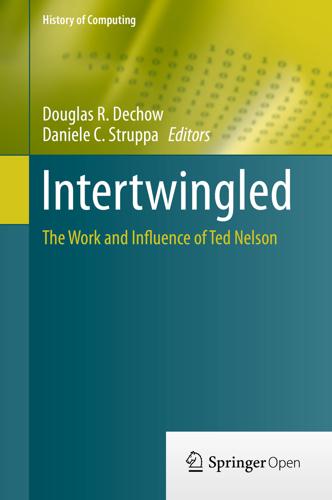
Intertwingled: The Work and Influence of Ted Nelson (History of Computing)
by
Douglas R. Dechow
Published 2 Jul 2015
Struppa Orange, CA February 7, 2015 Contents Part I Artistic Contributions 1 The Computer Age Ed Subitzky 2 Odes to Ted Nelson Ben Shneiderman Part II Peer Histories 3 The Two-Eyed Man Alan Kay 4 Ted Nelson’s Xanadu Ken Knowlton 5 Hanging Out with Ted Nelson Brewster Kahle 6 Riffing on Ted Nelson—Hypermind Peter Schmideg and Laurie Spiegel 7 Intertwingled Inspiration Andrew Pam 8 An Advanced Book for Beginners Dick Heiser Part III Hypertext and Ted Nelson-Influenced Research 9 The Importance of Ted’s Vision Belinda Barnet 10 Data, Metadata, and Ted Christine L. Borgman 11 Making Links: Everything Really Is Deeply Intertwingled Wendy Hall 12 Ted Nelson Frode Hegland 13 History Debugged Daniel Rosenberg 14 We Can and Must Understand Computers NOW Noah Wardrip-Fruin 15 The Future of Transclusion Robert M.
…
Accessed 4 Jan 2015 Footnotes 1System builders will be still on the scene because their job will never be finished. 2See in this volume, Laurie Spiegel, Chap. 6: Riffing on Ted Nelson. © The Author(s) 2015 Douglas R. Dechow and Daniele C. Struppa (eds.)IntertwingledHistory of Computing10.1007/978-3-319-16925-5_5 5. Hanging Out with Ted Nelson Brewster Kahle1 (1)Internet Archive, 300 Funston Ave, 94118 San Francisco, CA, USA Brewster Kahle Email: brewster@archive.org It’s a great honor to honor a great man like Ted Nelson. I have very much enjoyed my whole relationship with him. That’s why I’ve titled my short piece “Hanging Out with Ted Nelson” so that I can discuss what it is it like to sort of bum around and hitch rides and just play around with Ted.
…
Mindful Press, Sausalito; distributed by Lulu.com. http://www.lulu.com/shop/ted-nelson/geeks-bearing-gifts/paperback/product-4312837.html Nelson TH (2008) System for exploring connections between data pages. http://www.google.com/patents/US20090222717. U.S. Patent application 12/039,656, filed 28 Feb Nelson TH (2010) Possiplex: movies, intellect, creative control, my computer life and the fight for civilization: an autobiography of Ted Nelson. Mindful Press, Hackettstown; distributed by Lulu.com. http://www.lulu.com/shop/ted-nelson/possiplex/ebook/product-17533977.html Nelson TH (2011) Dr Ted Nelson – interwingularity: when ideas collide.

Memory Machines: The Evolution of Hypertext
by
Belinda Barnet
Published 14 Jul 2013
I won’t risk crediting him with inspiring this book, however; Ted once told me that the problem with inspiring people is that they then try to credit you with things you don’t like. So just in case, I take full credit and full responsibility. I should also point out that he wouldn’t consider himself a pioneer in the league of Ted Nelson or Andy van Dam or Wendy Hall – more a ‘Storyspace groupie’, as he put it to me. I disagree. But we’ll get to that in the final chapter, a chapter he argued quite convincingly for me to include. I would also like to thank Ted Nelson, who first set aside a chunk of time to speak to me in Japan in 1999, and then came to stay with us in Melbourne in 2011. He provided me with his time, books, memories and a wad of yellow xxiv Memory Machines sticky notes he left in the spare room.
…
Apple presented HyperCard with much pomp and ceremony, but it was met with an undertone of disdain (as Joyce recalls it); the feeling was ‘we all knew systems that had a good deal more functionality, like FRESS, and we sort of resented being told, “here’s hypertext”’ (Joyce 2011a). Ted Nelson also presented a paper on Xanadu (‘All for One and One for All’) and Janet Walker presented a paper on the Document Examiner. ‘It was fabulous,’ recalls Joyce, ‘the whole hypertext world discovered one another’ (Joyce 2011a). The demos at Hypertext ’87 were literally at the center of the conference. One big room, lots of big systems, systems we’d been reading about for years but that you’d never actually seen before. There in one room: Ted Nelson’s Xanadu, Engelbart’s NLS/Augment, Walker’s Symbolics Document Explorer, Joyce and Bolter with Storyspace, [Bernstein’s] Hypergate, Meyrowitz and Landow and Yankelovich and van Dam with Intermedia.
…
Memory Machines ADVANCE PRAISE ‘Belinda Barnet has given the world a fine-grain, blow-by-blow report of how hypertext happened, how we blundered to the World Wide Web, and what other things electronic literature might still become. Congratulations!’ —Ted Nelson, hypertext pioneer ‘This is a fine and important book, the first to capture the rich history of ideas and people that led to the World Wide Web. Memory Machines carefully examines what the key figures were trying to do, and judiciously explores what they accomplished and how the systems we now use daily sometimes exceed their dreams and sometimes fall embarrassingly short of their early achievements.’

Possiplex
by
Ted Nelson
Published 2 Jan 2010
From this I learned: be open to project possibilities as they unfold; be ready to steer the project to follow your vision as required, but take heed of where the project wants to go. What would Victor Navasky have said? 1956/1997 I ran into Victor Navasky, editor of The Nation, also a Swarthmore alumnus, around 1997. He said, “Not THE Ted Nelson?” I politely waited to find out what that meant to him. “Not the Ted Nelson who published Nothing Magazine?” Ah, what an inner glow that gave me. In the following semester, my good friend Charlie Harris published a parody of Nothing. He called it Something. What would Courtney Smith have said? June 1956 In his annual commencement address, Swarthmore’s president Courtney Smith took note that magazines called Nothing and Something had been published on campus.
…
an autobiography of Ted Nelson POSSIPLEX • Movies, Intellect, Creative Control, My Computer Life and the Fight for Civilization First edition, 2010 POSSIPLEX: Movies, Intellect, Creative Control, My Computer Life and the Fight for Civilization, © 2010 Theodor Holm Nelson. All rights reserved. INTELLECTUAL PROPERTY NOTICES: The following are current trademarks of Project Xanadu, either registered or claimed: Xanadu® hypertext; XanaduSpace™; the Eternal-Flaming-X™ symbol ZigZag® database and software mechanisms; the Zigfinity™ symbol; Illusium™ multidimensional viewdata-- “The stuff that dreams are made of™”.
…
INTELLECTUAL PROPERTY NOTICES: The following are current trademarks of Project Xanadu, either registered or claimed: Xanadu® hypertext; XanaduSpace™; the Eternal-Flaming-X™ symbol ZigZag® database and software mechanisms; the Zigfinity™ symbol; Illusium™ multidimensional viewdata-- “The stuff that dreams are made of™”. UltiDimensional™ viewing. Transcopyright™ permission doctrine, content delivery and sale method. The following are trademarks for designs still offered under consultation by the author: Fantasm™ Parallel Textface™ (broader generic: Transpointing windows) Walkie-Thinkie™ Retrocorder™ Ted Nelson’s JOT™ [not to be confused with ‘JOT’ offered by others] Cinenym™ HyperCoin™ SoftWorld™ LedgerDomain™ FlapDoodle™, Pictrola™ SpiralTime™ TRAC® is or was a registered trademark of Rockford Research, Inc. The following are former trademarks of the author used in this book-“Vortext” was at one time a claimed trademark of the author, and is used to refer to a specific design in this narrative.

Tools for Thought: The History and Future of Mind-Expanding Technology
by
Howard Rheingold
Published 14 May 2000
They all have what they need to materialize the tools and toys they have dreamed about for decades. Ted Nelson's fortunes, have not (yet) turned out so spectacularly. What Ted Nelson and his long-suffering associate Roger Gregory have now is a long program written in the "C" language -- a program that is either a future goldmine for Ted Nelson and a boon to all humankind, or yet another crackpot boondoggle on the fringes of computer history. Unsettled as his future might be, what he had in the past was the foresight, the orneriness, and the tenacity to talk clearly and plainly about the computer empire's new clothes. Ted Nelson was another one of the few people who saw the personal augmentation potential of computers early in the game and grasped the significance of the work being done at Utah, SRI, MIT and PARC.
…
Feldman, eds., Computers and Thought (New York: McGraw-Hill Book Co., 1963). [10] Avron Barr, "Artificial Intelligence: Cognition as Computation," 18. [11] Ibid. [12] Ibid., p. 19. [13] Ibid., p.22. Chapter Fourteen: Xanadu, Network Culture, and Beyond [1] Ted Nelson, Dream Machines/Computer Lib (self-published, 1974). [2] Ted Nelson, Literary Machines (self-published, 1983). [3] Ibid., 1/17. [4] Ibid., 1/18. [5] Ted Nelson, "A New Home For the Mind," Datamation, March 1982, 174. [6] Ibid., 180. [7] Roy Amara, John Smith, Murray Turoff, and Jaques Vallee "Computerized Conferencing, a New Medium," Mosaic, January-February 1976
…
He's currently on his "third career crash." and still has a while to wait before he knows whether the stock he holds in the company that is going to market his dream will make him a millionaire, thereby vindicating his long struggle, or leave him penniless, thereby branding him as a bona fide crank instead of a late-blooming visionary. Like so many other computer prodigies, Ted Nelson started his often lonely and always stubbornly unique intellectual journey when he first realized what they were trying to do to him in school. "I hated school all my life," he claims, "from the first grade through high school, unrelentingly and every minute. I have never known anyone who hated school as much as I did, although my assumption is that other dropouts do." Despite his repeated clashes with educational authorities, Ted Nelson managed to establish himself as an "extreme loony on campus" at Swarthmore , in the late 1950s, a place and an era where extreme loonies were rather more rare than they became a decade later.

Intertwingled: Information Changes Everything
by
Peter Morville
Published 14 May 2014
In 1934, Paul Otlet envisioned a scholar’s workstation that turned millions of 3 x 5 index cards into a web of knowledge by using a new kind of relationship known as the “Link.”lxiv In 1945, Vannevar Bush imagined the memex, a machine that enabled its users to share an associative “web of trails.”lxv In the early 60s, Ted Nelson coined “hypertext” and set out to build Xanadu, a non-sequential writing system with visible, clickable, unbreakable, bi-directional hyperlinks. lxvi Figure 3-1. Ted Nelson’s Xanalogical Structure. In 1968, Doug Englebart “real-ized” these dreams by showing hypertext (and most elements of modern computing) in “the mother of all demos.”lxvii Through the 70s and 80s, dozens of protocols and networks were made and merged, and in 1991, Tim Berners-Lee launched the World Wide Web as a public service on the Internet.
…
This simple, modular approach helped the Web to spread like wildfire, yet it also ruled out core features of earlier visions. Ted Nelson imagined a vertically integrated system that managed everything from code and interface to copyright and micropayment. Xanadu’s transpointing windows would support bidirectional links, transclusion, and side-by-side comparison. It would elevate the work of scholars and advance Doug Englebart’s dream to augment human intellect, so we might understand and resolve the world’s seemingly insoluble problems. In the eulogy, Ted Nelson makes clear the heights of their ambition and their depth of disappointment. I used to have a high view of human potential.
…
But a few years ago, I began to sense a glitch. My ability to help my clients was limited by our narrow focus. This was partly my fault for defining myself as a specialist, but I eventually came to see that this problem of reductionism is endemic to our culture. In 2014, I wrote this book to show Ted Nelson’s insight that everything is deeply intertwingled is more vital than ever, and to argue we can get better at getting better by changing how we organize information, not only on websites, but in our minds. It was not an easy book to write, and if its reading makes you uncomfortable, then perhaps it has met my ambition.
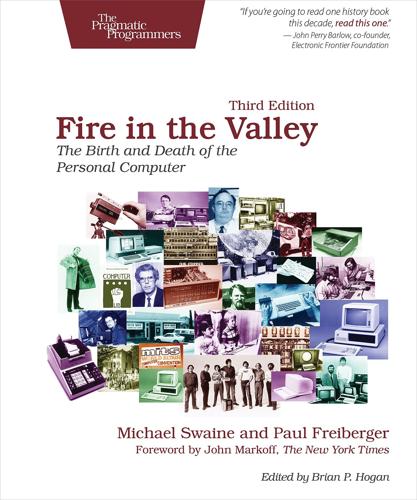
Fire in the Valley: The Birth and Death of the Personal Computer
by
Michael Swaine
and
Paul Freiberger
Published 19 Oct 2014
Albrecht said that PCC was a company in the same sense that Janis Joplin’s band Big Brother and the Holding Company was a company. * * * Figure 29. Computer Lib and Dream Machines “You can and must understand computers NOW,” Ted Nelson’s Computer Lib proclaimed. To Homebrewers it was the manifesto of the revolution. The second half of Computer Lib was printed upside down and had its own front cover. (Courtesy of Ted Nelson) Albrecht was a passionate promoter of computer power to the people. He wanted to teach children, in particular, about the machines. So, he split off from the Portola Institute to form Dymax, an organization dedicated to informing the general public about computers.
…
At IMSAI, for the first time a company would enter the nascent industry driven by a laserlike focus on business success rather than a passion for technology. It would achieve that success, and would also run afoul of some of the errors that personal-computer companies still struggle with today. After Altair Everybody wanted to be second. –Ted Nelson, computer visionary, philosopher, and critic During the two and a half years between the January 1975 Popular Electronics cover story announcing the Altair 8800 and the May 1977 sale of MITS to Pertec, a new industry was on the rise. The Altair announcement triggered both technological and social change.
…
Plus, as one hobbyist of the time put it, it had “the world’s slowest BASIC.” The names given to the corporate start-ups reflected the informality and tongue-in-cheek humor of the hobbyist movement. Lee Felsenstein started a company called Loving Grace Cybernetics and later another called Golemics Incorporated. Ted Nelson’s Itty-Bitty Machine Company, a sly play on IBM, appeared in Evanston, Illinois. Chicken Delight Computer Consultants cropped up in New Jersey. Kentucky Fried Computers began in Northern California. A thin line existed between buyers and manufacturers in those early days. Operating a microcomputer took so much expertise and dedication that to say a skilled user could have become a manufacturer was no exaggeration.

Cataloging the World: Paul Otlet and the Birth of the Information Age
by
Alex Wright
Published 6 Jun 2014
Geeks Bearing Gifts: V.1.1: How the Computer World Got This Way. Sausalito, Calif.: Mindful Press, 2008. ———. Literary Machines 93.1. Sausalito, Calif.: Mindful Press, 1993. ———. Possiplex: Movies, Intellect, Creative Control, My Computer Life and the Fight for Civilization: An Autobiography of Ted Nelson. Sausalito, Calif.: Mindful Press, 2010. 330 BIBLIOGRAPHY ———. “Ted Nelson Specs,” n.d. http://hyperland.com/mlawLeast.html. Neurath, Otto, and Marie Neurath. Empiricism and Sociology: With a Selection of Biographical and Autobiographical Sketches. Dordrecht: Reidel, 1973. Nikolow, Sybilla. “Gesellschaft Und Wirtschaft: An Encyclopedia in Otto Neurath’s Pictorial Statistics from 1930.”
…
The conventional history of the Internet traces its roots through an Anglo-American lineage of early computer scientists like Charles Babbage, Ada Lovelace, and Alan Turing; networking visionaries like Vinton G. Cerf and Robert E. Kahn; as well as hypertext seers like Vannevar Bush, J. C. R. Licklider, Douglas Engelbart, Ted Nelson, and of course Tim Berners-Lee and Robert Cailliau, who in 1991 released their first version of the World Wide Web. The dominant influence of the modern computer industry has placed computer science at the center of this story. Nonetheless Otlet’s work, grounded in an age before microchips and semiconductors, opened the door to an alternative stream of thought, one undergirding our present-day information age even though it has little to do with the history of digital computing.
…
In the first stage of existence, human beings perceived reality with their senses alone; in the second, they interpreted their experience and gave it externalized expression; in the third, they introduced writing to register their sense perceptions; in the fourth, they created scientific instruments to record empirical data; in the fifth, documents and instruments began to merge into a single unified device—something like the “book- machine” he had written about earlier in the book; in the sixth and final stage, human consciousness itself would merge with these instruments to achieve what Otlet dubbed “hyper-intelligence.” In this enlightened state of symbiosis between humanity and machines, recorded media would merge with the direct recording of human perception—such as sound, taste, and even smell—blending into a state of “hyper-documentation”30 (a term he coined thirty years before Ted Nelson’s more famous neologism of “hypertext”). In a passage that would make the editors of Wired blush, he described the possibility of achieving “a pure spirit with access to complete and intuitive knowledge of all things at every moment.” Such a state of transcendent realization would not come easily.
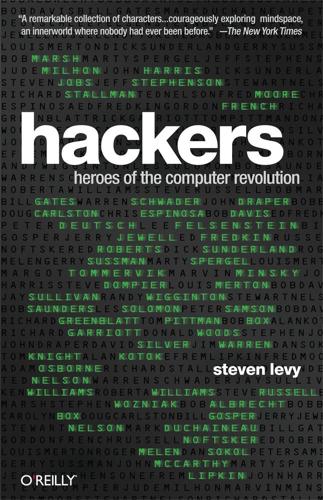
Hackers: Heroes of the Computer Revolution - 25th Anniversary Edition
by
Steven Levy
Published 18 May 2010
After a typically disorganized PCC staff meeting—Bob, with ideas zipping into his head like Spacewar torpedoes, could not easily follow an agenda—long tables would be covered with cloths, and gradually the room would fill up with a virtual who’s who of alternative computing in Northern California. Of the distinguished visitors dropping in, none was so welcome as Ted Nelson. Nelson was the self-published author of Computer Lib, the epic of the computer revolution, the bible of the hacker dream. He was stubborn enough to publish it when no one else seemed to think it was a good idea. Ted Nelson had a self-diagnosed ailment of being years ahead of his time. Son of actress Celeste Holm and director Ralph Nelson (”Lilies of the Field“), product of private schools, student at fancy liberal arts colleges, Nelson was an admittedly irascible perfectionist, his main talent that of an “innovator.”
…
No publisher was interested, certainly not with his demands on the format—a layout similar to the Whole Earth Catalog or the PCC, but even looser, with oversized pages loaded with print so small you could hardly read it, along with scribbled notations, and manically amateurish drawings. The book was in two parts: one was called “Computer Lib,” the computer world according to Ted Nelson; and the other, “Dream Machines,” the computer future according to Ted Nelson. Shelling out two thousand dollars out of pocket—“a lot to me,” he would say later—he printed a few hundred copies of what was a virtual handbook to the Hacker Ethic. The opening pages shouted with urgency, as he bemoaned the generally bad image of computers (he blamed this on the lies that the powerful told about computers, lies he called "Cybercrud“) and proclaimed in capital letters that THE PUBLIC DOES NOT HAVE TO TAKE WHAT IS DISHED OUT.
…
Playful and brilliant MIT professor who headed AI lab and allowed the hackers to run free. Fred Moore. Vagabond pacifist who hated money, loved technology, and cofounded Homebrew Club. Stewart Nelson. Buck-toothed, diminutive, but fiery AI lab hacker who connected the PDP-1 computer to hack the phone system. Later cofounded Systems Concepts company. Ted Nelson. Self-described “innovator” and noted curmudgeon who self-published the influential Computer Lib book. Russell Noftsker. Harried administrator of MIT AI lab in late sixties; later president of Symbolics company. Adam Osborne. Bangkok-born publisher-turned-computer-manufacturer who considered himself a philosopher.
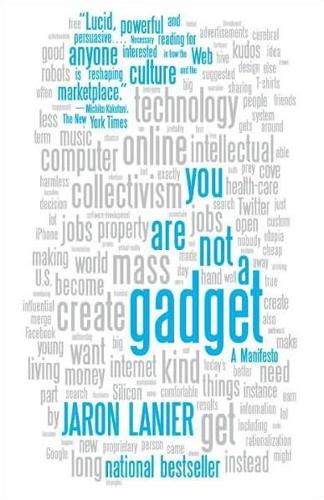
You Are Not a Gadget
by
Jaron Lanier
Published 12 Jan 2010
Entrenched Software Philosophies Become Invisible Through Ubiquity An even deeper locked-in idea is the notion of the file. Once upon a time, not too long ago, plenty of computer scientists thought the idea of the file was not so great. The first design for something like the World Wide Web, Ted Nelson’s Xanadu, conceived of one giant, global file, for instance. The first iteration of the Macintosh, which never shipped, didn’t have files. Instead, the whole of a user’s productivity accumulated in one big structure, sort of like a singular personal web page. Steve Jobs took the Mac project over from the fellow who started it, the late Jef Raskin, and soon files appeared.
…
It is to their credit that I feel free to speak my mind, knowing that I will still be welcome in our world. On the other hand, I know there is also a distinct tradition of computer science that is humanistic. Some of the better-known figures in this tradition include the late Joseph Weizenbaum, Ted Nelson, Terry Winograd, Alan Kay, Bill Buxton, Doug Englebart, Brian Cantwell Smith, Henry Fuchs, Ken Perlin, Ben Schneiderman (who invented the idea of clicking on a link), and Andy Van Dam, who is a master teacher and has influenced generations of protégés, including Randy Pausch. Another important humanistic computing figure is David Gelernter, who conceived of a huge portion of the technical underpinnings of what has come to be called cloud computing, as well as many of the potential practical applications of clouds.
…
Another important humanistic computing figure is David Gelernter, who conceived of a huge portion of the technical underpinnings of what has come to be called cloud computing, as well as many of the potential practical applications of clouds. And yet, it should be pointed out that humanism in computer science doesn’t seem to correlate with any particular cultural style. For instance, Ted Nelson is a creature of the 1960s, the author of what might have been the first rock musical (Anything & Everything), something of a vagabond, and a counterculture figure if ever there was one. David Gelernter, on the other hand, is a cultural and political conservative who writes for journals like Commentary and teaches at Yale.
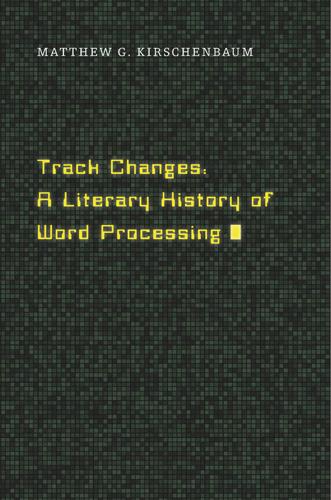
Track Changes
by
Matthew G. Kirschenbaum
Published 1 May 2016
Yet I suspect it is also because word processing is widely perceived as belonging to the realm of application instead of innovation. To this way of thinking a word processor is merely an arbitrary instantiation or just one particular configuration of the universal machine that is a modern digital computer. The technorati have often shown surprising disdain for word processing on exactly these grounds. Ted Nelson, for example, visionary author of the book Literary Machines (1980) and founder of the Xanadu project, has frequently inveighed against programs like WordStar and Word that are based on the WYSIWYG model. For him, these represent the triumph of a fundamentally conservative vision. “A document,” he laments, “can only consist of what can be printed.”63 Jay David Bolter, a classicist who was an early advocate for computers as writing tools, rendered much the same verdict, concluding that word processing was “nostalgic” in its respect for the aesthetics of print.64 In this view, the promise and potential of newer, more experimental modes of electronic writing—including nonlinear hypertext, a term Nelson himself coined and has popularized throughout his career—is at odds with a technological paradigm whose highest achievement lies in mimicking the appearance of something that might have come from Gutenberg’s own press.65 Scholarly interest in the history of electronic literature has similarly gravitated overwhelmingly toward those authors who sought to reimagine our definitions of the literary through branching, multimodal, and interactive narratives or poetic compositions.
…
It was simply too ambitious for its time, and Herbert had abandoned it by the end of 1980 (by one account he had spent some $40,000 on it by then).54 But the book, at least, had gotten written. Entitled Without Me You’re Nothing (1980), it is one of the more intriguing artifacts of its era, more in line with Ted Nelson’s visionary Computer Lib / Dream Machines (1974) than the innumerable other home computer guidebooks soon to be on the market. The cryptic title was meant to be understood as words addressed to the computer itself: “Without our intervention they are useless junk,” Herbert and Barnard repeated over and over again, a variation on the standard programming axiom “garbage in, garbage out.”55 Nonetheless, they begin with a dire-sounding warning: “You are already being taken advantage of by people with computers,” they write.
…
For much of this it relied on software for entering and editing text with a keyboard and rendering that text on what was then a five-inch television screen (for the dramatic public demonstration the screen was projected on a twenty-foot display, itself a notable feat). Watching in the audience that day was Andy van Dam, a Brown University computer scientist who since 1967 had been independently working on his own screen editing systems, in partnership with fellow computer pioneer, Ted Nelson. Their collaboration was to prove fraught, with Nelson departing Brown the following year.8 Van Dam had always emphasized the importance of being able to deliver print-ready documents to a user and steered the design of the system in that direction, whereas Nelson regarded the dictates of the printed page as far too limiting and an abdication of the full potential of what he preferred to call hypertext.

The Internet Is Not the Answer
by
Andrew Keen
Published 5 Jan 2015
But this project to network the world wasn’t quite complete. There was one thing still missing—Vannevar Bush’s Memex. There were no trails yet on the Internet, no network of intelligent links, no process of tying two items together on the network. The World Wide Web In 1960, a “discombobulated genius” named Ted Nelson came up with the idea of “nonsequential writing,” which he coined “hypertext.”40 Riffing off Vannevar Bush’s notion of “information trails,” Nelson replaced Bush’s reliance on analog devices like levers and microfilm with his own faith in the power of digital technology to make these nonlinear connections.
…
All the bits of information in every computer at CERN, and on the planet, would be available to me and to anyone else. There would be a single global information space.44 In 1984, when Berners-Lee returned to CERN and discovered the Internet, he also returned to his larger vision of a single global information space. By this time, he’d discovered the work of Vannevar Bush and Ted Nelson and become familiar with what he called “the advances” of technology giants like Donald Davies, Paul Baran, Bob Kahn, and Vint Cerf. “I happened to come along with time, and the right interest and inclination, after hypertext and the Internet had come of age,” Berners-Lee modestly acknowledged.
…
According to Stasiland author Anna Funder, Mielke’s organization might have turned as many as 15% of all East Germans into one kind of data thief or another.4 Known as “the Firm” to East Germans, Stasi was attempting to transform the whole of East Germany into a real-time set of Rear Window. The country was, as Big Data authors Viktor Mayer-Schönberger and Kenneth Cukier note, “one of the most comprehensive surveillance states ever seen.”5 Like Ted Nelson’s Xanadu project to develop hypertext, Mielke’s East Germany eliminated the concept of deletion. “We had lived like behind glass,” explained the novelist Stefan Heym. Mielke organized his society around the same kind of brightly lit principles that the architect Frank Gehry is now using to build Facebook’s new open-plan office in Silicon Valley.
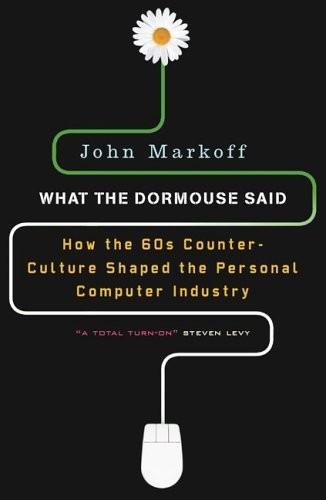
What the Dormouse Said: How the Sixties Counterculture Shaped the Personal Computer Industry
by
John Markoff
Published 1 Jan 2005
This book grew out of a spirited dinner held several years ago on a Sausalito, California, houseboat. The evening was an informal reunion of a computer-industry pioneer—Douglas Engelbart—with a small group of people who had once worked for him: Bill and Roberta English and Bill and Ann Duvall. Also present was Ted Nelson, an itinerant writer, inventor, and social scientist who can best be described as the Don Quixote of computing. Nelson was a contemporary of Engelbart in the sixties, and the two men had pursued many of the same innovations. Engelbart, however, had been the first to demonstrate a vision that led directly to today’s computing world.
…
He saw Brown University computer scientist Andy van Dam buttonhole Engelbart in a mob of people. At the time, van Dam cut a striking figure—he looked like a wild man, with his globe of Afro-style curly hair and a goatee. The confrontation between the two men was remarkable, because the previous year van Dam had begun developing a similar system at Brown in collaboration with Ted Nelson, the itinerant poet-sociologist who had a vision that in many ways paralleled Engelbart’s. Now van Dam was stunned to find that Engelbart’s group had completed what he and Nelson and a group of young students were just starting. Kay watched van Dam drill into Engelbart. Indeed, van Dam was as intense as Engelbart was mild mannered, and it looked to Kay as if van Dam had an almost desperate need to find out everything about the system, as if he didn’t believe it was possible, and he was angry to discover that it existed at all.
…
The system, he discovered, forced each document to be broken into chunks of no greater size than one thousand characters and to be in an outline structure. The process was so laborious that when he finished he decided that he had no interest in going through the process again, whatever the benefits. McCarthy came to view both Engelbart’s and Ted Nelson’s ideas on text editing and hypertext as too dictatorial. He decided structure was imposing an unnecessary restriction on his thought process. The structure imposed by NLS, which researchers like McCarthy detested, coupled with the training required to become an expert user and the limited network bandwidth that forced network users to use the more awkward remote version of NLS, ultimately became the system’s downfall.
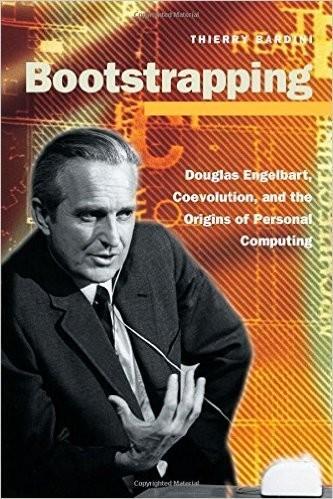
Bootstrapping: Douglas Engelbart, Coevolution, and the Origins of Personal Computing (Writing Science)
by
Thierry Bardini
Published 1 Dec 2000
The later research of Ted Nelson on hypertext is very representative of that emphasis. 4 It is problematic, however, to grant Bush the status of the "unique forefa- ther" of computerized hypertext systems. The situation is more complicated than that. 5 For the development of hypertext, the important distinction is not between personal access to information and communication, but between dif- ferent conceptions of what communication could mean, and there were in fact two different approaches to communication at the origin of current hypertext and hypermedia systems. The first is represented by Ted Nelson and his Xanadu Project, which was aiming at facilitating individual literary creativity.
…
Taylor, who gave me the opportunity to teach and do research in the best conditions pos- sible and, therefore, to tackle such a crazy project as writing this book; and, last but not least, Douglas Engelbart, of the Bootstrap Institute, who agreed to answer my questions and cheerfully helped me in writing this book. This book would not have existed without the patience and understanding of the people who told me their stories: Don Andrews, Bob Belleville, Peter Deutsch, Bill English, Charles Irby, Alan Kay, Butler Lampson, Harvey Leht- man, Ted Nelson, George Pake, Jeff Rulifson, Dave Smith, Robert Taylor, Keith Uncapher, Jacques Vallee, "Smokey" Wallace, and Jim Warren. Thank you all, and I sincerely hope that you will occasionally find your voice in these pages. My deepest thank-yous go to my development editor, Bud Bynack, who made a book out of my manuscript, and to my editor, Nathan MacBrien, who always knew how to keep his cool when I did not keep mine.
…
The origin of the basic notions un- derlying hypertext offer one example. 38 Language and the Body Hypertext As the personal computer has evolved, the one important way of employing "the various types of network relationships among concepts" has been the de- velopment of hypertext, "a style of building systems for information represen- tation and management around a network of nodes connected together by typed links" (Halasz 1988, 836). Because of how he conceived of the way that natural language could function in the human-computer interface, Douglas Engelbart, along with Ted Nelson, often is credited for pioneering work in the field of hypertext or hypermedia. Many, however, trace the genealogy of hy- pertext not to Engelbart and his extension of the Sapir- Whorf Hypothesis, but to the work of Vannevar Bush. In a famous article called "As We May Think," Vannevar Bush, who had done some pioneer work in analog computing in the 1920'S and 1930'S while he was a professor at MIT, 2 proposed a new kind of electro-optical device, the Memex, "an enlarged intimate supplement of an individual's memory."

Tripping on Utopia: Margaret Mead, the Cold War, and the Troubled Birth of Psychedelic Science
by
Benjamin Breen
Published 16 Jan 2024
Sagan’s first encounter: All quotes relating to Sagan’s visit are from Carl Sagan, The Cosmic Connection: An Extraterrestrial Perspective (New York: Dell, 1973), 134–36. “Oh, fuck! Fuck and damn!”: Ted Nelson, “To Whatever Porpoise” (an excerpt from Nelson’s unpublished autobiography, available at https://archives.obs-us.com/obs/english/papers/ted/tedbio12.htm). “brilliant and persuasive”: Ted Nelson, “My Year at John Lilly’s Dolphin Lab,” and personal correspondence. “Through the windows”: Ted Nelson, “Man and Dolphin: A Film Script,” January 29, 1963, 10, available at https://archive.org/details/mananddolphinscript. “suddenly realized that”: John C.
…
Lilly appeared to be cherry-picking his data, carefully selecting the snippets of “dolphinese” that resembled human language and excluding the rest. The most unsettling feature of the CRI, however, was not Lilly’s quixotic obsession with dolphin speech. It was the fact that his dolphins kept dying. Among those who questioned Lilly’s actions at the lab was Ted Nelson, a young Harvard graduate who had first met Lilly on a train in New Jersey. Nelson was intrigued by the idea of studying animal communication with computers. And he adored Gregory Bateson, with whom he shared an office (“Oh, fuck! Fuck and damn! he would say, with little provocation,” Nelson recalled fondly).
…
Even then, he recalled: Bateson described his experience in a September 9, 1958, letter to Humphry Osmond, Box 26, GB papers. not just witnessing but shaping: On the role of military funding in the origins of Silicon Valley, see O’Mara, The Code, chapter 1; and Harris, Palo Alto, passim. Bateson influenced the internet’s development in characteristically eccentric ways. For instance, in 1964, he shared an office with Ted Nelson, who was in the process of developing the concepts of “hypertext” and “links” between digital pages. That same year, Bateson was discussing communication theory with J. C. R. Licklider of MIT during the period when Licklider was laying the intellectual foundation for the World Wide Web. Much of his conversations with both men, however, seem to have centered on communication between octopuses rather than humans.

The Code: Silicon Valley and the Remaking of America
by
Margaret O'Mara
Published 8 Jul 2019
Festooned with hand-drawn dragons and off-kilter typesetting, the PCC had the rangy look and feel of an underground tabloid like the Berkeley Barb (where Felsenstein had become a staff writer). Instead of columns decrying Nixon’s bombing of Cambodia, the PCC had features on how to learn computer language, with titles like “BASIC! Or, U 2 can control a computer.”14 If Bob Albrecht was the revolution’s Ben Franklin, then Ted Nelson became known as its Tom Paine. A computing-entranced former graduate student in sociology with a prep-school accent and the manners to match, Nelson considered himself a specialist in ideas “too big to get through the door.” In the mid-1960s, he came up with a nonlinear system for organizing writing and reading he called “hypertext.”
…
The mainframe computer was just like a bureaucratic organization: hierarchical, siloed, the domain of experts. The bus design is “a system of free interchange subject only to simple traffic rules.”11 The expansive optimism of “convivial cybernetics” that Lee Felsenstein outlined in 1974—just like Ted Nelson’s bold declarations of “computer lib” that same year—burned brightly among the community of programmers and social reformers, even as the grandest hopes of the counterculture ebbed. The good vibes of the Summer of Love and Woodstock had been subsumed by the violence of Altamont and the Manson Family and Kent State.
…
Within three years of Homebrew’s start, nearly a dozen magazines about microcomputers were rolling off the presses nationwide.7 Also spreading the word: the event impresarios who blew the computer-club vibe up to trade-show size. SDS organizer turned MITS marketing director David Bunnell orchestrated the first of these, the World Altair Computer Convention in Albuquerque in early 1976. New Jersey technical writer Sol Libes launched the Trenton Computer Festival a couple of months later. (Ted Nelson gave a loopy keynote at Bunnell’s event, alarming the crowd as he expounded on the marvelous possibilities of microchip-powered sex toys.) By 1977, the New Jersey meeting had become an annual event, joined by Computermania in Boston and the Byte-sponsored Personal Computing Expo in New York City.8 In the Bay Area, there was Jim Warren, a math professor turned programming enthusiast and Homebrew member, who started the biggest party of them all: an annual West Coast Computer Faire that attracted 13,000 computer die-hards at its inaugural outing in spring 1977.

Insanely Great: The Life and Times of Macintosh, the Computer That Changed Everything
by
Steven Levy
Published 2 Feb 1994
So, as he later explained, "it seemed like the most natural thing to make drawings with it." Natural for Sutherland, perhaps. But few had imagined that this rough beast of a calculating engine could be transmogrified into a sophisticated system to create shapes, pictures, and blueprints. And when you created your shapes you could copy them, alter them, or store them. In 1977, Ted Nelson (whom we will meet when our story turns to HyperCard) gushed about Sutherland's wonder-"The Most Important Computer Program Ever Written," he called it-in his book The Home Computer Revolution .. . . working on a screen you could try out things you couldn't tryout as a draftsman on paper. You were concerning yourself with an abstracted version of the drafting problem; you didn't have to sharpen any pencils, or prepare a sheet to draw on, or use a T-square or an eraser.
…
A series of links would result in an information pathway that hearkened back to the dreams of Vannevar Bush, whose influential gedanken experiment, memex, was characterized by the data "trails" that would be cleared by the scientists and researchers using it. As it turns out, Atkinson was not the only one at work on realizing Bush's vision. The memex vision, of course, had originally ignited Douglas Engelbart, who in turn triggered the series of innovations that would lead to Macintosh. But the most vocal proponent of Bush's ideas was Ted Nelson. For years Nelson had been a peripatic if somewhat cranky figure in the clubby personal computer underground; he was known mainly for the iconoclastic populism in his self-published 1974 book Computer Lib/Dream Machines, in which he made a strident and at times hilarious case for truly personal computers.
…
So while thousands used the program to organize information, most of the millions of people owning HyperCard never bothered with HyperTalk. On the other hand, HyperCard's mere presence on millions of Macintoshes was a subtle yet profound cultural milestone. Before HyperCard, those interested in realizing the dreams of Vannevar Bush and Ted Nelson had formed a community that, despite ardent efforts to educate people to their vision, remained on the fringe. These hypertext adherents had been regarded in the same way that linguists treat the fervent proponents of Esperanto-cultists who may have a point to make, but whose cause is doomed. The appearance of HyperCard, the product with hypertext as its heart, changed all that.

A Wealth of Common Sense: Why Simplicity Trumps Complexity in Any Investment Plan
by
Ben Carlson
Published 14 May 2015
Tommy: Let's think about this for a sec, Ted. Why would somebody put a guarantee on a box? Hmmm, very interesting. Ted Nelson (customer): Go on, I'm listening. Tommy: Here's the way I see it, Ted. Guy puts a fancy guarantee on a box 'cause he wants you to feel all warm and toasty inside. Ted Nelson: Yeah, makes a man feel good. Tommy: Course it does. Why shouldn't it? Ya figure you put that little box under your pillow at night, the Guarantee Fairy might come by and leave a quarter, am I right, Ted? Ted Nelson: What's your point? Tommy: The point is, how do you know the fairy isn't a crazy glue sniffer?
…
Tommy: The point is, how do you know the fairy isn't a crazy glue sniffer? “Building model airplanes” says the little fairy; well, we're not buying it. He sneaks into your house once, that's all it takes. The next thing you know, there's money missing off the dresser, and your daughter's knocked up. I seen it a hundred times. Ted Nelson: But why do they put a guarantee on the box? Tommy: Because they know all they sold ya was a guaranteed piece of sh*t. That's all it is, isn't it? Hey, if you want me to take a dump in a box and mark it guaranteed, I will. I got spare time. But for now, for your customer's sake, for your daughter's sake, ya might wanna think about buying a quality product from me.
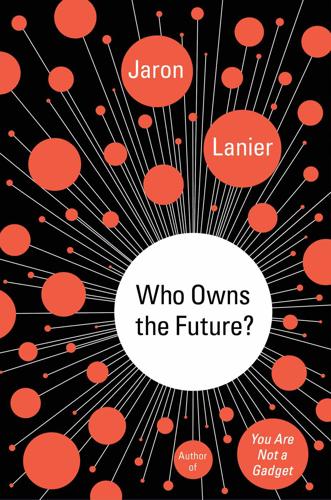
Who Owns the Future?
by
Jaron Lanier
Published 6 May 2013
Or a neuroscientist who can read what images a person is seeing directly from scanning their brain, and further hopes to someday be able to incite ideas and memories into people’s brains. Yet I can hardly think of a hard-core Silicon Valley figure who has decided not to have children because of a belief that we will successfully engineer a posthuman future. On some deep level most of us must be in on our own joke. PART SEVEN Ted Nelson CHAPTER 18 First Thought, Best Thought First Thought Ted Nelson was the first person to my knowledge to describe, starting in 1960, how you could actually implement new kinds of media in digital form, share them, and collaborate.* Ted was working so early that he couldn’t invoke basic notions like digital images, because computer graphics hadn’t been described yet.
…
Clout Must Underlie Rights, if Rights Are to Persist Melodramas Are Tenacious Emphasizing the Middle Class Is in the Interests of Everyone A Better Peak Waiting to Be Discovered SIXTH INTERLUDE: THE POCKET PROTECTOR IN THE SAFFRON ROBE The Most Ancient Marketing Monks and Nerds (or, Chip Monks) It’s All About I “Abundance” Evolves Childhood and Apocalypse PART SEVEN Ted Nelson 18. First Thought, Best Thought First Thought Best Thought The Right to Mash-up Is Not the Same as the Right to Copy Two-Way Links Why Isn’t Ted Better Known? PART EIGHT The Dirty Pictures (or, Nuts and Bolts: What a Humanistic Alternative Might Be Like) 19. The Project You Can’t Tweet This A Less Ambitious Approach to Be Discouraged A Sustainable Information Economy A Better Beach 20.
…
This is because we can imagine software, improperly, I’ll argue, operating without the need for human operators, and even in an era of Abundance depopulated of people. Abundance kills the hand, but not Turing’s ghosts. • Nelson: Information technology of a particular design could help people remain people without resorting to extreme politics when any of the other, creepily eschatological humors seem to be imminent. Ted Nelson, in 1960, came up with a brand-new, still-emerging humor, which suggests information as a way to avoid excesses of politics even as we approach an inevitably imperfect Abundance. It essentially proposes a consilience between the Invisible Hand and Abundance. This is the humor I am hoping to further with this book.

The End of Big: How the Internet Makes David the New Goliath
by
Nicco Mele
Published 14 Apr 2013
To get to the personal computer and the makings of the End of Big, we need to shift to a different strain of thought that was popping up at the same time in the nerd world, which received its most memorable expression in a book by another quixotic computer scientist, Ted Nelson. Computer Lib You’ve heard of “women’s lib” coming out of the Vietnam era? Well, turns out there was “computer lib,” too. Ted Nelson’s pivotal 1974 book Computer Lib: You Can and Must Understand Computers Now confronted nerds everywhere with a rousing call to action, demanding that they claim computing for individuals so as to free them from the oppression of, you guessed it, large institutions.
…
In a portion of the book called “Down with Cybercrud,” Nelson disparaged the half-truths and lies that nerds told non-nerds to keep them from understanding computers’ power. He came out aggressively against the institutional nature of computers, hoping to bring them out of the big universities and military and into the homes of the masses, where they could serve what he saw as a truly liberating purpose. Home-Brewed for the People Inspired by Ted Nelson and others, a generation of nerds emerged from the late 1960s and 70s determined to disrupt the march of the institutional computer and bring the personal computer “to every desk in America,” as Bill Gates famously put it. Brand described this generation as embodying a “hacker ethic”: “Most of our generation scorned computers as the embodiment of centralized control.
…
. … Its inner workings are obscure, it publishes no account of its income or expenses, it has no obligation to respond to criticism, and all authority rests in the hands of a single man.36 I don’t mean to single out Newmark. I’ve met him, even spent some time with him, and he is an honest, genuine man working hard to do good. Yet I’m concerned with the ideological, anti-institutional thread running through connective technology, from Ted Nelson’s “Computer Lib” in the ’70s, to Steve Jobs’s literal and metaphorical 1984, to John Perry Barlow’s declaration of independence in the ’90s, up to Craigslist today. What if government adopted Craigslist’s core philosophies? True to the Craigslist ethos, customer service would be paramount. Newmark famously talks about himself as nothing more than a customer service representative.

Valley of Genius: The Uncensored History of Silicon Valley (As Told by the Hackers, Founders, and Freaks Who Made It Boom)
by
Adam Fisher
Published 9 Jul 2018
Stewart Brand was there; Ted Nelson was there. A lot of the BASIC people from Homebrew were there. A lot of the founding fathers were there, definitely: a lot of the old-school hackers. John Markoff: I was there, hanging out. Fabrice Florin: You really had all the players all in one place. It was a big deal. Michael Naimark: I remember thinking to myself that this was a moment, a really significant event. Lee Felsenstein: It really was a gathering of the illuminati. The important thing was that all the illuminati had never before gotten in a room at the same time. Ted Nelson: It was the Woodstock of the computer elite!
…
When Bill would whisper in his ear, “Stall for a couple of minutes, we can’t get the…” whatever it was that wasn’t working, Doug would just pause and discourse on something else until he got word that “Okay, we’re good to go.” And, we lucked out. It all worked enough to take the day. Andy van Dam: At the time, I had been working with Ted Nelson on our first hypertext system with a team of three part-time undergraduates. We were working in the hammer-and-chisel phase of this industrial revolution, coding in assembly language, and we were pretty good at it. But, here these guys had invented machine tools. They had built tools to build tools: This whole recursive “bootstrap” idea, starting with the system itself, and working all the way up through augmenting the human intellect, was just mind-boggling.
…
Andy Hertzfeld was on the committee, I remember. Andy Hertzfeld: So I got a phone call from Stewart Brand, and once a week for seven weeks we drove up to Sausalito. There were like seven hackers he got to design the Hackers Conference. Stewart Brand: We got a pretty good influx of folks. There was Ted Nelson, obviously. Lee Felsenstein, the sort-of master of ceremonies for the Homebrew meetings, which I had never gone to. But his reputation was good. Lee Felsenstein: By that time, Homebrew had ossified. It wasn’t new people coming anymore. There was the same old faces. I called it “the old farts society.”

This Is for Everyone: The Captivating Memoir From the Inventor of the World Wide Web
by
Tim Berners-Lee
Published 8 Sep 2025
In a 1945 Atlantic article, ‘As We May Think’, Vannevar Bush, scientific adviser to the US president, had theorized about a kind of ‘non-linear information retrieval’ system that would allow users to create trails of links between documents, mimicking the associative processes of the human mind. Influenced by Bush’s work, in 1963 the visionary entrepreneur Ted Nelson coined the terms ‘hypertext’ and ‘hypermedia’ as part of an ambitious computing platform he termed Project Xanadu. Nelson envisioned a universal, interconnected information space where every piece of content could be linked to every other piece, reflecting the non-linear nature of human thought.
…
Apple bundled it as a default app with Macintosh computers, and a community of HyperCard enthusiasts grew around it. • So there is your potted history of hypertext – except at the time I was almost totally unaware of these developments! When I was conceptualizing the web as an information-wrangling tool, I had never heard of Ted Nelson nor Douglas Engelbart, and I had never used HyperCard. My introduction to hypertext only came while I was drafting a proposal for my document-linking system, when someone – I cannot remember who, but probably my CERN colleague Robert Cailliau – shared with me the July 1988 edition of the journal Transactions on Computer Systems, produced by the Association for Computing Machinery (ACM).
…
I respected his perspective, of course – I was pushing an uncompromising, long-shot technology of my own. Still, I pointed out to Pei Wei that people were actually using ViolaWWW, so that might be an important area to focus on first. As the conversation continued, I tried and failed to persuade him. The discussion of what to do with ViolaWWW was left unresolved. On this same visit, I first met Ted Nelson – the one who had coined the term ‘hypertext’. Ted was an eccentric, wide-eyed dreamer who lived on a houseboat in Sausalito, just north of the Golden Gate bridge. His 1983 book, Literary Machines, was an eclectic, non-sequential rant with some very specific ideas about the systems we should be using.
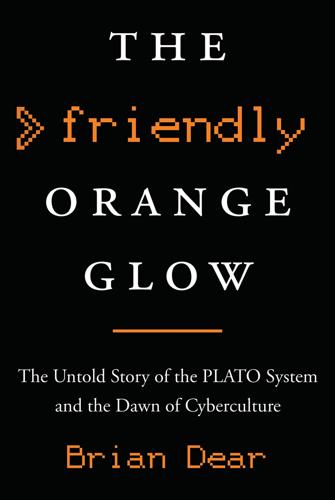
The Friendly Orange Glow: The Untold Story of the PLATO System and the Dawn of Cyberculture
by
Brian Dear
Published 14 Jun 2017
Part II THE FUN THEY HAD Now we have the Screen, and it rules. Our kids are perma-plugged into its promise, admiring all its jewels. —Kate Tempest Orange dots beckon. They welcome with temptation, power, and promise. All 262,000 of them reach out with their unearthly glow. —P. Gregory Springer The computer display will be mankind’s new home. —Ted Nelson 11 Impeachment There is a creek, Boneyard is its name, that runs west to east across the University of Illinois campus, through the Engineering Quad, just south of CERL. It acts as a natural hyphen connecting the two towns of Champaign and Urbana. For years, mere mention of Boneyard to locals triggered strong responses.
…
“People would think those guys had much more exciting jobs than us,” says Al Harkrader, “and they were certainly more exciting since most of the stuff that we did was pretty esoteric, but Empire and Avatar and all those things were very tangible to most people so they could say, ‘Well, you know, gee, I met Al Harkrader but I couldn’t figure out what the hell the guy did, but I met Chuck Miller, the guy who wrote Empire, and that was totally cool.’ ” 21 Coming of Age Ted Nelson is a genius, a visionary, a maverick, and somewhat of a Cassandra in computerdom. Born in 1937, he coined the term “hypertext” in 1963 and spent years designing and promoting his dream for the world: an elaborate, two-way hypertext online network, which he named Xanadu. (The world ignored it, and we have the Web instead.)
…
An article on the PLATO online community seemed out of place in such a publication until one realized the topic: computer addiction of the PLATO variety. Indeed, for so many users with author signons on the system, their experience was a kind of high, one that once you reached, you never wanted to come down from. — Ted Nelson may only have been being whimsical when he gave the title “The Cave of PLATO” to his drawing of a PLATO IV terminal in Dream Machines, but nevertheless it was a profound observation on a remarkably ironic situation. Bitzer had named this system PLATO, and his crowning achievement, the PLATO IV terminal with its gas plasma flat panel touch-sensitive graphical display, supporting internal mirrors and microfiche color slide projection, was indeed a cave of sorts, not unlike the cave in Plato’s allegory.

Power and Progress: Our Thousand-Year Struggle Over Technology and Prosperity
by
Daron Acemoglu
and
Simon Johnson
Published 15 May 2023
Our discussion of disappointing productivity benefits from digital technologies is based on Gordon (2016) as well as the theoretical ideas discussed in Acemoglu and Restrepo (2019b). Opening epigraphs. Any internet search will confirm that the Ted Nelson statement is widely attributed to him, without a confirmed source; and Leontief (1983), 405. Lee Felsenstein quoting Revolt in 2100, “Secrecy is the keystone…,” is from Levy (2010, 131). Ted Nelson, “THE PUBLIC DOES NOT…” and “THIS BOOK…,” are from Levy (2010, 144). Grace Hopper is discussed at length in Isaacson (2014, Chapter 3). A Reversal. US inequality trends are explored and discussed in Goldin and Margo (1992), Katz and Murphy (1992), Piketty and Saez (2003), Goldin and Katz (2008), and Autor and Dorn (2013).
…
The economic model underlying shared prosperity was being increasingly challenged in the United States, and the balance of power gradually shifted away from labor and government regulation after the direction of technology moved toward greater automation. Shared prosperity started unraveling soon thereafter, as we will see in Chapter 8. 8 Digital Damage The good news about computers is that they do what you tell them to do. The bad news about computers is that they do what you tell them to do. —attributed to Ted Nelson One might say that the process by which progressive introduction of new computerized, automated, and robotized equipment can be expected to reduce the role of labor is similar to the process by which the introduction of tractors and other machinery first reduced and then completely eliminated horses and other draft animals in agriculture.
…
One of its luminaries, Lee Felsenstein, was a political activist who viewed computers as a means of liberating people and liked to quote “Secrecy is the keystone of all tyranny” from the science-fiction novel Revolt in 2100. Felsenstein worked on hardware improvements to democratize computing and break the grip of IBM and other incumbents. Another Northern California hacker, Ted Nelson, published what can be considered as a handbook of hacking, “Computer Lib,” which starts with the motto “THE PUBLIC DOES NOT HAVE TO TAKE WHAT IS DISHED OUT” and continues: THIS BOOK IS FOR PERSONAL FREEDOM. AND AGAINST RESTRICTION AND COERCION… A chant you can take to the streets: COMPUTER POWER TO THE PEOPLE!
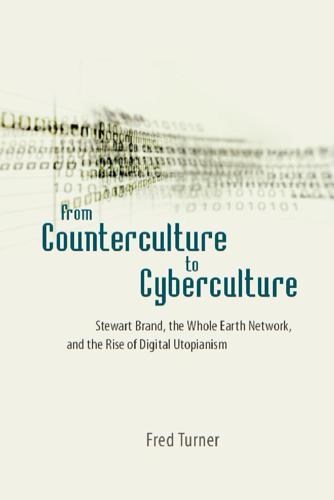
From Counterculture to Cyberculture: Stewart Brand, the Whole Earth Network, and the Rise of Digital Utopianism
by
Fred Turner
Published 31 Aug 2006
I wasn’t approaching it from either a theoretical point of view or an engineering point of view, but from sort of a fun-ness point of view.”59 According to Levy, this point of view characterized the work of two subsequent generations of innovators. The first comprised the “hardware hackers” of the 1970s. Clustered in and around the San Francisco Bay area, they included the young founders of Apple Computer, Steve Jobs and Steve Wozniak, as well as early proselytizers for personal computing such as Lee Felsenstein, Bob Albrecht, and Ted Nelson, a programmer who had authored a volume loosely based on the Whole Earth Catalog entitled Computer Lib: You Can and Must Understand Computers Now. For this generation, Levy suggested, computing was a form of political rebellion. Computers may have always been large and centralized, they may have always been guarded by institutionalized experts, and they may have been used to organize the war in Vietnam, but this generation would put them to new uses
…
In particular, he suggested, they wanted to “witness or have the group articulate what the hacker ethic was.”63 Brand and Kelly aimed to explore via the conference whether hackers might constitute the sort of cultural vanguard for the 1980s that the back-to-the-land and ecology crowds had hoped to be for the decade before. Something like 150 hackers actually arrived. Among others, they included luminaries such as Steve Wozniak of Apple, Ted Nelson, free software pioneer Richard Stallman, and Ted Draper—known as Captain Crunch for his discovery that a toy whistle he found in a box of the cereal gave just the right tone to grant him free access to the phone system. Some of the hackers worked alone, part-time, at home; others represented such diverse institutions as MIT, Stanford, Lotus Development, and various software makers.
…
Virtually all of the journalistic reports that came from the Conference echoed John Markoff ’s comments in Byte magazine: “Anyone attending would instantly have realized that the stereotype of computer hackers as isolated individuals is nowhere near accurate.”67 Some of [ 138 ] Chapter 4 those same reports picked up on another theme as well, however. Several either quoted or paraphrased Ted Nelson’s exclamation “This is the Woodstock of the computer elite!”68 One listed Stewart Brand among the “luminaries of the personal computer ‘revolution.’” Another described Brand as a “long-time supporter of hackers.”69 Quietly, almost without noticing it, the invited reporters had begun to intertwine the countercultural play of Woodstock, and countercultural players such as Brand, with an industry and a work style that had emerged within and at the edges of such culturally central institutions as MIT, Stanford, and Hewlett-Packard.

A People’s History of Computing in the United States
by
Joy Lisi Rankin
In a move that Apple would emulate a decade later, DEC supported its minicomputer market by putting BASIC on its machines and by publishing educational materials, including the clever Huntington Project simulations, that showcased BASIC. In his popular manifesto Computer Lib: You Can and Must Understand Computers Now, Ted Nelson urged p eople about BASIC , “If you have the chance to learn it, by all means do.” He recognized that BASIC had been “contrived specifically to make programming quicker and easier,” yet it was “a very serious language” for “people who want simple systems to do understandable t hings in direct ways that are meaningful to them, and that d on’t disrupt their companies or their lives.”137 From its humble origins in small-town Hanover, New Hampshire, BASIC became the language of millions of p eople computing. 4 The Promise of Computing Utilities and the Proliferation of Networks This chapter represents a departure from the rest in this book.
…
What went quietly unobserved, however, was that GE retained its successful multimillion-dollar-per-year time-sharing business when it sold its computer department.67 Since then, that GE even had a thriving computing utility business has largely been forgotten, despite the fact that it continued to be profitable into the 1990s.68 One notable exception: in his widely popular 1974 work on computing for the p eople, Computer Lib / Dream Machines, Ted Nelson tipped his hat to GE , acknowledging its provision of interactive computing centers across the United States and Europe.69 What had begun a decade earlier as an experiment in a small liberal arts college had grown into a multimillion dollar business for GE. Tymshare also persisted in offering its computing utility ser v ices throughout the 1970s; by 1977 Tymshare’s network TYMNET featured over two thousand nodes that served one thousand simultaneous users.70 In fact, revenues from the time-sharing industry steadily increased e very year u ntil 1983, when t hese networked computing serv ices were challenged by a growing personal computer market.71 The Promises and Perils of a National Computing Network During Dartmouth College’s dedication of its new Kiewit Computation Center in December 1966, Kemeny spoke confidently about the future benefits of a national computing network, and the New York Times reported it—in starkly gendered terms.
…
Although Apple declared its philosophy 238 A People’s History of Computing in the United States was “to provide software for our machines f ree or at minimal cost,” Apple sought (aggressively) to sell its hardware.30 W hether they w ere called home computers, hobby computers, microcomputers, or personal computers, they were consumer products, purveyed by Steve Jobs. Ted Nelson recognized this in his keynote address during the first West Coast Computer Faire. Although Nelson was excited about the “magic” of small computers, he also recognized the dollar signs driving the fair’s frenetic energy. He blazed, “The little computers are here, you can buy them on your plastic charge card, and the available accessories include disc storage, graphical displays, interactive games . . . and goodness knows what else. . . .

The Innovators: How a Group of Inventors, Hackers, Geniuses and Geeks Created the Digital Revolution
by
Walter Isaacson
Published 6 Oct 2014
Licklider becomes founding director of ARPA’s Information Processing Techniques Office. Doug Engelbart publishes “Augmenting Human Intellect.” 1963 Licklider proposes an “Intergalactic Computer Network.” Engelbart and Bill English invent the mouse. 1972 1964 Ken Kesey and the Merry Pranksters take bus trip across America. 1965 Ted Nelson publishes first article about “hypertext.” Moore’s Law predicts microchips will double in power each year or so. 1966 Stewart Brand hosts Trips Festival with Ken Kesey. Bob Taylor convinces ARPA chief Charles Herzfeld to fund ARPANET. Donald Davies coins the term packet switching. 1967 ARPANET design discussions in Ann Arbor and Gatlinburg. 1968 Larry Roberts sends out request for bids to build the ARPANET’s IMPs.
…
“I wanted to build a creative space,” he later said, “something like a sandpit where everyone could play together.”19 He hit upon a simple maneuver that would allow him to make the connections he wanted: hypertext. Now familiar to any Web surfer, hypertext is a word or phrase that is coded so that when clicked it sends the reader to another document or piece of content. Envisioned by Bush in his description of a memex machine, it was named in 1963 by the tech visionary Ted Nelson, who dreamed up a brilliantly ambitious project called Xanadu, never brought to fruition, in which all pieces of information would be published with two-way hypertext links to and from related information. Hypertext was a way to allow the connections that were at the core of Berners-Lee’s Enquire program to proliferate like rabbits; anyone could link to documents on other computers, even those with different operating systems, without asking permission.
…
Browsers would let them find and share information, but they could not work together intuitively.”46 To some extent, he was right. Despite the astonishing success of the Web, the world would have been a more interesting place if the Web had been bred as a more collaborative medium. Berners-Lee also paid a visit to Ted Nelson, who lived on a houseboat in Sausalito in the shadow of the Golden Gate Bridge. Twenty-five years earlier, Nelson had pioneered the concept of a hypertext network with his proposed Xanadu project. It was a pleasant meeting, but Nelson was annoyed that the Web lacked key elements of Xanadu.47 He believed that a hypertext network should have two-way links, which would require the approval of both the person creating the link and the person whose page was being linked to.
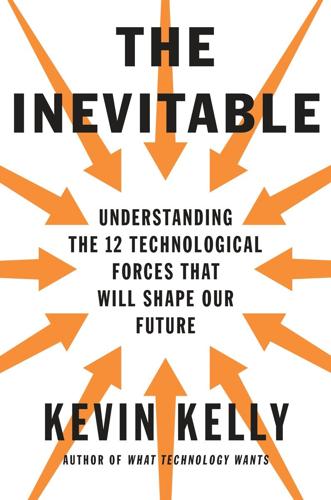
The Inevitable: Understanding the 12 Technological Forces That Will Shape Our Future
by
Kevin Kelly
Published 6 Jun 2016
But prohibiting the flow of money within this emerging parallel civilization was crazy. Money in cyberspace was inevitable. That was a small misperception compared with the bigger story we all missed. Computing pioneer Vannevar Bush outlined the web’s core idea—hyperlinked pages—way back in 1945, but the first person to try to build out the concept was a freethinker named Ted Nelson, who envisioned his own scheme in 1965. However, Nelson had little success connecting digital bits on a useful scale, and his efforts were known only to an isolated group of disciples. At the suggestion of a computer-savvy friend, I got in touch with Nelson in 1984, a decade before the first websites.
…
At that time, anyone silly enough to trumpet the above list as a vision of the near future would have been confronted by the evidence: There wasn’t enough money in all the investment firms in the entire world to fund such bounty. The success of the web at this scale was impossible. But if we have learned anything in the past three decades, it is that the impossible is more plausible than it appears. Nowhere in Ted Nelson’s convoluted sketches of hypertext transclusion did the fantasy of a virtual flea market appear. Nelson hoped to franchise his Xanadu hypertext systems in the physical world at the scale of mom-and-pop cafés—you would go to a Xanadu store to do your hypertexting. Instead, the web erupted into open global flea markets like eBay, Craigslist, or Alibaba that handle several billion transactions every year and operate right into your bedroom.
…
Lifelogging is possible now only because computation and storage and sensors have become so cheap that we can waste them with little cost. But creative “wasting” of computation has been the recipe for many of the most successful digital products and companies, and the benefits of lifelogging also lie in its extravagant use of computation. Among the very first to lifelog was Ted Nelson in the mid-1980s (although he didn’t call it that). Nelson, who invented hypertext, recorded every conversation he had with anyone on audio or videotape, no matter where or of what importance. He met and spoke to thousands of people, so he had a large rental storage container full of tapes. The second person was Steve Mann in the 1990s.
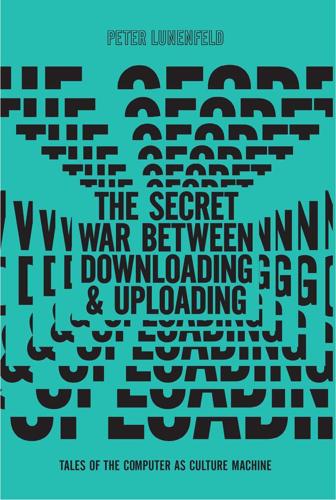
The Secret War Between Downloading and Uploading: Tales of the Computer as Culture Machine
by
Peter Lunenfeld
Published 31 Mar 2011
There is another small but growing strain that locates the transformations of our world in the work of computing’s visionaries. As far back as Howard Rheingold’s Tools for Thought written in the mid-1980s, there has been an alternative narrative featuring people like the irrepressible hypertext impresario Ted Nelson and even drug guru turned cyberpundit Timothy Leary—an intellectual’s history of computing.2 For the scholars studying hypertext poetry, the students in new media departments, and those with a cultural interest in computing, these are stories of secular saints, a hagiography of sorts. To get to a workable understanding of the history of the culture machine, we need to braid these three strands, looking at programmers, millionaires, and dreamers.
…
The reason for this is painfully simple: they did not capitalize on their genius. Engelbart invented the mouse, and SRI sold the license for it for forty thousand dollars. Kay was part of the team that created the Alto, the first marketable personal computer, but Xerox could never quite figure out how to sell it.19 Others, like Ted Nelson, the most explicitly Aquarian of them all, have been taken as cautionary tales by those who followed. The technology was there, the dream of participation was not just alive, it was thriving, but the Aquarians couldn’t sell it to the masses. And selling to the masses is one way to be remembered, at least in the United States.

Dawn of the New Everything: Encounters With Reality and Virtual Reality
by
Jaron Lanier
Published 21 Nov 2017
The first half was an interview with Gregory Bateson2 about how cybernetics would change society and the way we know the world. The other half was devoted to Spacewar!, the first networked videogame, and the fanatical devotion the game inspired. Another example was cloaked as a grainy retort to the craft of printing, just like New York conceptual art ’zines. This was Computer Lib/Dream Machines, by Ted Nelson. Unreadable in sections, thanks to an infinitesimal font, it was a glimpse of a promised land through distant fog, enchanting. It had two front covers. One cover was for a book about how computers would inspire utopian politics, the specifics of which were either not articulated or not legible.
…
We hadn’t yet hypnotized ourselves into Möbius-Orwellian tech talk. Now we describe what we are doing accurately, but we pretend we’re being ironic, so that we can feel better about ourselves. Shall we call it “Notwellian?” I remember looking at the first Web pages with people at Xerox PARC, and with Ted Nelson. “Unbelievable that someone would launch a design with only one-way links.” That was the universal appraisal; it was cheating. But there was undeniable action there on the nascent Web, more than anywhere else. We techies collectively acquiesced; we succumbed to the decision to make online networks artificially mysterious by leaving out the reverse links.
…
You keep chasing. Ivan Sutherland has been pursuing “asynchronous” computer architectures for years now. These are hardware systems without a master clock, but the implication is deeper; that computation can be fundamentally less localized and hierarchical. It’s been a long haul for him. Similarly, Ted Nelson is still working with a shifting group of students and followers to implement Xanadu, the original design for a digital network, which he started on in 1960. I’m convinced it would be better than the World Wide Web, but no one can know until there’s a fuller implementation. The idealist projects of computer scientists aren’t the ones that end up running the world, but they have indirect influence.
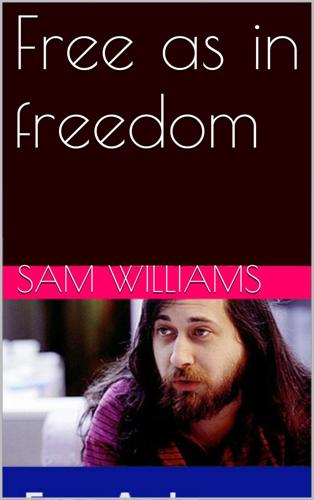
Free as in Freedom
by
Sam Williams
Published 16 Nov 2015
"One hundred years from now, Richard and a couple of other people are going to deserve more than a footnote," says Moglen. "They're going to be viewed as the main line of the story." The "couple other people" Moglen nominates for future textbook chapters include John Gilmore, Stallman's GPL advisor and future founder of the Electronic Frontier Foundation, and Theodor Holm Nelson, a.k.a. Ted Nelson, author of the 1982 book, Literary Machines . Moglen says Stallman, Nelson, and Gilmore each stand out in historically significant, nonoverlapping ways. He credits Nelson, commonly considered to have coined the term "hypertext," for identifying the predicament of information ownership in the digital age.
…
I pictured later editions looking much like online versions of the Talmud, my original text in a central column surrounded by illuminating, third-party commentary in the margins. My idea drew inspiration from Project Xanadu (http://www.xanadu.com/), the legendary software concept originally conceived by Ted Nelson in 1960. During the O'Reilly Open Source Conference in 1999, I had seen the first demonstration of the project's open source offshoot Udanax and had been wowed by the result. In one demonstration sequence, Udanax displayed a parent document and a derivative work in a similar two-column, plain-text format.

The Age of Cryptocurrency: How Bitcoin and Digital Money Are Challenging the Global Economic Order
by
Paul Vigna
and
Michael J. Casey
Published 27 Jan 2015
Writing for The New Yorker: Joshua Davis, “The Crypto-Currency: Bitcoin and Its Mysterious Inventor,” New Yorker, October 10, 2011. New York University journalism professor Adam Penenberg: Adam L. Penenberg, “The Bitcoin Crypto-currency Mystery Reopened,” Fast Company, October 11, 2011, http://www.fastcompany.com/1785445/bitcoin-crypto-currency-mystery-reopened. Next came Ted Nelson: Ted Nelson, “I Think I Know Who Satoshi Is,” YouTube, May 17, 2013, https://www.youtube.com/watch?v=emDJTGTrEm0. Then, on March 6, 2014, the weekly magazine Newsweek: Leah McGrath Goodman, “The Face Behind Bitcoin,” Newsweek, March 6, 2014. “It piqued my interest,” says Andresen: Gavin Andresen, interviewed by Michael J.
…
He got explicit denials from them, including one from King in which he criticized bitcoin for having “no intrinsic value.” Penenberg was undeterred by this and speculated that King’s statement could have been a red herring, but Penenberg’s evidence was circumstantial and inconclusive, and he conceded that. Next came Ted Nelson, an information theorist famous for coining the term hypertext in the 1960s. In a rambling, videoed monologue in which he adopted faux-British accents to mimic Sherlock Holmes, Nelson declared that the bitcoin inventor was Japanese mathematician Shinichi Mochizuki and dared him to deny it. Not only did Mochizuki have the kind of mind capable of devising such a scheme, Nelson said, he also had the suspicious habit of quietly leaving his mathematical discoveries on the Internet for people to find.

Whole Earth: The Many Lives of Stewart Brand
by
John Markoff
Published 22 Mar 2022
The section on personal computers was compiled by the now twenty-two-year-old Marc LeBrun, one of the group of enthusiasts who had that spring launched the Homebrew Computer Club, which in turn would light the entrepreneurial fire leading to the emergence of the personal computer industry in Silicon Valley. LeBrun called attention to a 128-page “underground” publication, Computer Lib/Dream Machines, published the previous year by Ted Nelson, a former sociology graduate student and coinventor of the concept of hypertext—Doug Engelbart had simultaneously come up with the same idea—that would eventually lead directly to the creation of the World Wide Web. (Like a range of publications, Computer Lib was modeled on the format of the Catalog.)
…
Although he had left the Whole Earth Software Catalog behind, he remained immersed in the computing world. Apple had struck a deal with the Point Foundation to develop a CD-ROM version of the Whole Earth Catalog. Apple financed the development of the project, which began in earnest in July 1987, based on its HyperCard technology, an early effort to implement the hypertext ideas of Engelbart and Ted Nelson, an iconoclastic computer philosopher who was Brand’s neighbor on the South 40 Dock—ideas that would eventually lead to the World Wide Web. The digitized Catalog was delivered to personal computer users via then brand-new CD-ROM optical disk technology. The computer game publisher Broderbund had agreed to publish the digital version of the Catalog, but it would prove to be a conspicuous failure—largely because CD-ROM players were still selling for $500, ensuring that the market for digital content remained minuscule.
…
That’s one fundamental compromise of human life and virtual reality sort of fixes it.” Brand was impressed by the demonstrations, but he also picked up niggling concerns that the enthusiasts were getting ahead of themselves. “Look! We can pick up books,” one newcomer to the virtual reality worlds exclaimed. To which Ted Nelson responded, “That’s nice, but can you read them?” * * * Sitting in Peter Schwartz’s Berkeley living room, John Brockman discovered a Stewart Brand he had never seen before. Despite the commercial failure of the Whole Earth Software Catalog, Brockman’s literary agency was booming. Beyond the book deals, Brockman had long played the role of impresario, and that continued after he became a book agent.
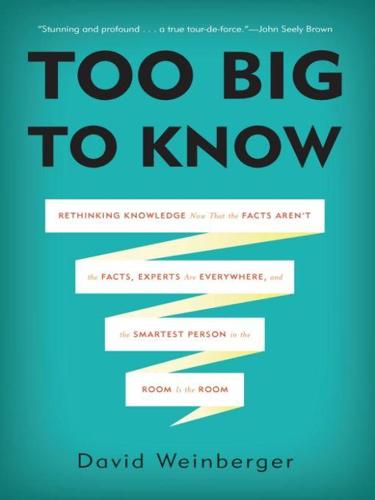
Too Big to Know: Rethinking Knowledge Now That the Facts Aren't the Facts, Experts Are Everywhere, and the Smartest Person in the Room Is the Room
by
David Weinberger
Published 14 Jul 2011
The problem with knowing the role of social media in the recent Mideast revolutions is that the events themselves are the result of a complex cluster of details that defies predictability and complete understanding. The same is true for human events overall, which is why we’re still arguing about whether the Civil War was fought over the issue of slavery.32 The world is too intertwingly, to use a word coined by network visionary Ted Nelson—too complexly interdependent and entangled to be fully comprehensible.33 The messy web of links that transparency gives rise to reflects that intertwingularity. It should lead us to wonder if one of the problems with objectivity and long-form argument is that they aren’t a good match to the structure of the world.
…
I posted a reply: http://www.hyperorg.com/blogger/2011/02/04/gladwell-proves-too-much/. 31 Louis Menand, “Books as Bombs,” New Yorker, January 24, 2011, http://www.newyorker.com/arts/critics/books/2011/01/24/110124crbo_books_menand. 32 For example, South Carolina’s celebration of the 150th anniversary of the start of the Civil War set off a new round in the controversy. See Wayne Washington, “150 Years Later, S. Carolina Celebration Sparks New Civil War,” McClatchy.com, December 19, 2010, http://www.mcclatchydc.com/2010/12/19/105532/150-years-later-s-carolina-celebration.html. 33 Ted Nelson coined the term “intertwingularity” in Computer Lib: Dream Machines (1974). Frank Hecker read my use of the word in Everything Is Miscellaneous and tracked down the exact source of Nelson’s phrase “Everything is deeply intertwingled,” which is harder than it seems because of the nonstandard ways in which Nelson published his work.

Computer: A History of the Information Machine
by
Martin Campbell-Kelly
and
Nathan Ensmenger
Published 29 Jul 2013
The only “catalog” to ever win a National Book Award, the publication was inspirational to many personal-computer pioneers including Apple Computer co-founder Steve Jobs, who later reminisced: “The Whole Earth Catalog . . . was one the bibles of my generation. . . . It was a sort of Google in paperback form, 35 years before Google came along: it was idealistic, and overflowing with neat tools and great notions.” While Brand and The Whole Earth Catalog offered inspiration, the most articulate spokesperson for the computer-liberation idea was Ted Nelson, the financially independent son of Hollywood actress Celeste Holm. Among Nelson’s radical visions of computing was an idea called hypertext, which he first described in the mid-1960s. Hypertext was a system by which an untrained person could navigate through a universe of information held on computers.
…
Besides acting as a swap shop for computer components and programming tips, it provided a forum for the computer-hobbyist and computer-liberation cultures to meld. During the first quarter of 1975, MITS received over $1 million in orders for the Altair 8800 and launched its first “worldwide” conference. Speakers at the conference included Ed Roberts, Gates and Allen as the developers of Altair BASIC, and the computer-liberation guru Ted Nelson. At the meeting Gates launched a personal diatribe against hobbyists who pirated software. This was a dramatic position: he was advocating a shift in culture from the friendly sharing of free software among hobbyists to that of an embryonic branch of the software-products industry. Gates encountered immense hostility—his speech was, after all, the very antithesis of computer liberation.
…
At the time he wrote those words, the intellectual problems involved in constructing a memex-type information system using computer technology had, in principle, been largely solved. J.C.R. Licklider, the head of ARPA’s Information Processing Techniques Office, for one, was working as early as 1962 on a project he called the Libraries of the Future, and he dedicated the book he published with that title: “however unworthy it may be, to Dr. Bush.” In the mid-1960s, Ted Nelson coined the term hypertext and Douglas Engelbart was working on the practical realization of similar ideas at the Stanford Research Institute. Both Nelson and Engelbart claim to have been directly influenced by Bush. Engelbart later recalled that, as a lowly electronics technician in the Philippines during World War II, he “found this article in Life magazine about his [Bush’s] memex, and it just thrilled the hell out of me that people were thinking about something like that. . . .

The Truth Machine: The Blockchain and the Future of Everything
by
Paul Vigna
and
Michael J. Casey
Published 27 Feb 2018
The Internet’s Missing Piece This was not the dream conveyed in the Cypherpunk manifesto of Tim May and his fellow band of libertarian advocates for cryptography, privacy, and an online world of individual empowerment. Those geeky rebels of the 1990s Bay Area wanted an Internet that was free of both government and corporatist control, a decentralized online economy where self-expression was devoid of censorship, where anyone could transact with anyone else under whatever identity they chose. Ideas like Ted Nelson’s ill-fated Xanadu project, which never achieved anywhere near its lofty vision of a global network of independent, self-publishing, interlinked, fully autonomous computers, envisaged a network in which far more processing power and data was placed under the control of individual owners’ computers.
…
New York Times columnist Thomas Friedman: Thomas Friedman, The World Is Flat: A Brief History of the Twenty-First Century (Farrar, Straus and Giroux, 2005) In The Age of Cryptocurrency, we reported: Paul Vigna and Michael J. Casey, The Age of Cryptocurrency (St. Martin’s Press, 2015), pp. 57–60. This was not the dream conveyed: Timothy C. May, “The Crypto Anarchist Manifesto,” https://www.activism.net/cypherpunk/crypto-anarchy.html. Ideas like Ted Nelson’s ill-fated Xanadu project: For a detailed analysis of the Xanadu Project’s sweeping vision but failed implementation, see: “The Curse of Xanadu,” Wired, June 1, 2015, https://www.wired.com/1995/06/xanadu/. These people included Marc Andreessen: Don Tapscott and Alex Tapscott, Blockchain Revolution: How the Technology behind Bitcoin Is Changing Money, Business and the World (Portfolio, 2016), p. 5.
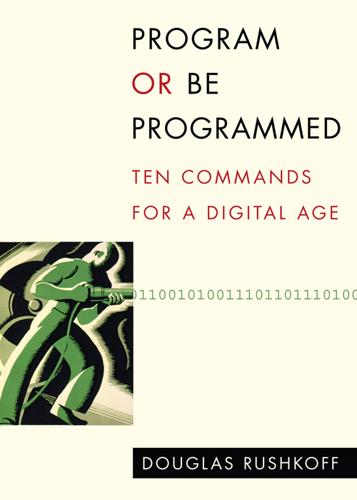
Program Or Be Programmed: Ten Commands for a Digital Age
by
Douglas Rushkoff
Published 1 Nov 2010
Free Culture: The Nature and Future of Creativity. New York: Penguin, 2005. McLuhan, Marshall. Understanding Media. New York: McGraw-Hill, 1964. Packer, Randall and Ken Jordan. Multimedia: From Wagner to Virtual Reality. New York: Norton, 2001. See the essays by Vannevar Bush, Norbert Weiner, James Licklider, Douglas Englebart, Ted Nelson, Alan Kay, and other Internet pioneers and visionaries. Postman, Neil. Technopoly: The Surrender of Culture to Technology. New York: Vintage Books, 1993. Rheingold, Howard. The Virtual Community: Homesteading on the Electronic Frontier. Boston: MIT Press, 1993. Rushkoff, Douglas. Cyberia: Life in the Trenches of Hyperspace.
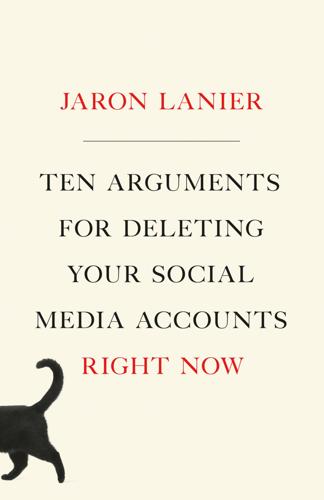
Ten Arguments for Deleting Your Social Media Accounts Right Now
by
Jaron Lanier
Published 28 May 2018
Who would you charge? Business plans have a way of sticking around even when they’re obsolete, however. Note that the ads didn’t go away when customers moved to paid cable. In the case of internet services, there was a choice from the start. In fact, the very first design for a digital network, dating to Ted Nelson’s work as a student in the 1960s, presumed that people would pay and be paid in tiny increments for goodies on a digital network. But that idea was pounded into virtual oblivion—albeit with the best of intentions—by the free-software movement. The movement to make software free was founded on an honest mistake.

The Invisible Web: Uncovering Information Sources Search Engines Can't See
by
Gary Price
,
Chris Sherman
and
Danny Sullivan
Published 2 Jan 2003
Bush called this “associative indexing … the basic idea of which is a provision whereby any item may be caused at will to select immediately and 10 The Invisible Web automatically another. This is the essential feature of the MEMEX. The process of tying two items together is the important thing.” In Bush’s visionary writings, it’s easy for us to see the seeds of what we now call hypertext. But it wasn’t until 1965 that Ted Nelson actually described a computerized system that would operate in a manner similar to what Bush envisioned. Nelson called his system “hypertext” and described the next-generation MEMEX in a system he called Xanadu. Nelson’s project never achieved enough momentum to have a significant impact on the world.
…
In a whimsical acknowledgment of this structure, Jerry Wang and David Filo renamed their service “Yet Another Hierarchical Officious Oracle,” commonly known today as Yahoo!. Table 1.1 A Timeline of Internet Search Technologies Year 1945 1965 1972 1986 1990 1991 1993 1994 1995 1996 1997 1998 1999 2000+ Search Service Vannevar Bush Proposes “MEMEX” Hypertext Coined by Ted Nelson Dialog—First Commercial Proprietary System OWL Guide Hypermedia Browser Archie for FTP Search, Tim Berners-Lee creates the Web Gopher: WAIS Distributed Search ALIWEB (Archie Linking), WWWWander, JumpStation, WWWWorm EINet Galaxy, WebCrawler, Lycos, Yahoo! Infoseek, SavvySearch, AltaVista, MetCrawler, Excite HotBot, LookSmart NorthernLight Google, InvisibleWeb.com FAST Hundreds of search tools 16 The Invisible Web In 1995 Infoseek, AltaVista, and Excite made their debuts, each offering different capabilities for the searcher.

Dreaming in Code: Two Dozen Programmers, Three Years, 4,732 Bugs, and One Quest for Transcendent Software
by
Scott Rosenberg
Published 2 Jan 2006
In Chandler, everything that you stored—email and addresses and events (appointments) and to-dos and random notes—was simply an “item,” and items would be organized and displayed however you damn well pleased. Conventional programs segregated information of various types in what OSAF’s developers began to call “silos.” The Chandler developers’ battle cry was: Level the silos! It was not the first time such a cry had been raised. Digital-age maverick Ted Nelson had propounded the idea of computers as “dream machines” and engines of personal liberation in the 1970s and invented the term hypertext to describe writing with embedded links that let you jump from one place to another. (Nelson views today’s Web as a bastardization of his more complex vision.)
…
“Unfortunately, most programmers like to program”: Larry L. Constantine, Constantine on Peopleware (Prentice Hall, 1995), pp. 123–24. “Keeping up with what’s available”: Ward Cunningham, quoted by Jon Udell in his InfoWorld blog at http://weblog.infoworld.com/udell/2004/05/21.htm #a1006. “People keep pretending they can”: These lines by Ted Nelson are widely distributed on the Net, and the word intertwingle appears frequently in Nelson’s writing, but the original source of the full quotation is obscure. One source cited is p. 45 of the first (1974) edition of his book Computer Lib/Dream Machines. There are two discussions of the quote’s origins at http://www.bootstrap.org/dkr/discussion/3260.htm and http://listserv.linguistlist.org/cgi-bin/wa?

Machines of Loving Grace: The Quest for Common Ground Between Humans and Robots
by
John Markoff
Published 24 Aug 2015
All of a sudden a confused world of multiple languages and computer protocols were all connected in an electronic Tower of Babel. When the World Wide Web first emerged, it offered a universal mechanism for easily retrieving documents via the Internet. The Web was loosely based on the earlier work of Doug Engelbart and Ted Nelson in the 1960s, who had independently pioneered the idea of hypertext linking, making it possible to easily access information stored in computer networks. The Web rapidly became a medium for connecting anyone to anything in the 1990s, offering a Lego-like way to link information, computers, and people.
…
Isaac Asimov, for example, was living in Cambridge at the time and came to Negroponte’s class to speak each year, as did Gordon Pask, a British cyberneticist who was traveling widely in U.S. computer research circles in the 1960s and 1970s. If Kay was influenced by Negroponte, he in turn would point to the influence and inspiration of Gordon Pask. At the beginning of the interactive computing era Pask had a broad but generally unchronicled influence on computer and cognitive science research in the United States. Ted Nelson met him in the hallways of the University of Illinois Chicago Circle campus and fell under his spell as well. He described Pask affectionately in his Computer Lib manifesto as the “maddest of mad scientists.” In 1968, Negroponte, like many in the computing world, was deeply influenced by Ivan Sutherland’s 1963 Ph.D. project, Sketchpad, a graphical and interactive computing tool that pioneered human-computer interaction design.
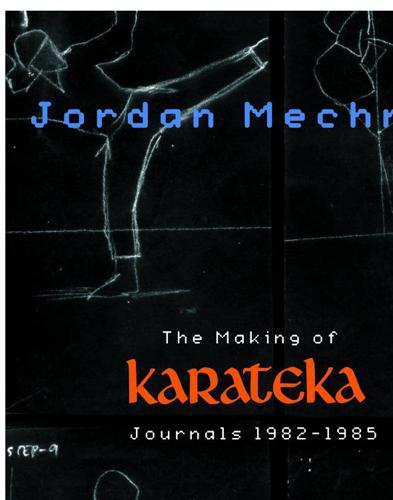
The Making of Karateka: Journals 1982-1985
by
Jordan Mechner
Published 26 Dec 2012
I was surprised at how bad they were. What disturbs me is not that they’re bad – I cranked them out stupidly fast – but that I didn’t realize how bad they were at the time. I’d hate to think that the stuff I‘m writing now could be that much worse than I think it is. HELP! I’m panicking! I just read an article by Ted Nelson in the May 1982 Creative Computing about Siggraph ACM. I can’t believe I missed the July ’82 one in Boston! I’ve GOT to go to this year’s! Oh shit … I’m ruined for the day now. I’ve got to get one of those “No Jaggies” Lucasfilm T-shirts! *** “It was at that moment that he realized that his future did not lie in scientific research, writing, academia, law, medicine, or the priesthood.
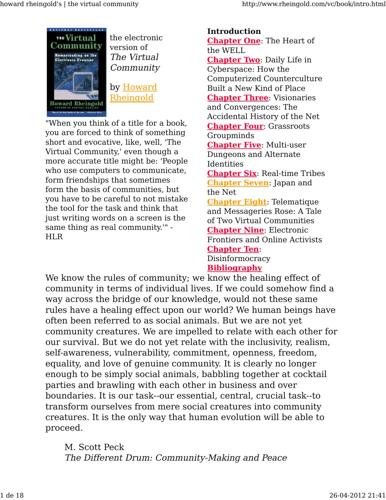
Howard Rheingold
by
The Virtual Community Homesteading on the Electronic Frontier-Perseus Books (1993)
Published 26 Apr 2012
This program, which your Internet host computer runs, turns the Net into a series of menus you can navigate with the arrow keys on your desktop computer keyboard. The name of the command combines an ancient grail quest in the computer world with the Internet tool for hopping from computer to computer. HyperT The ancient grail quest, known as hypertext, was first proposed by Ted Nelson in the 1960s and first implemented by Engelbart's SRI project, as a linked series of texts that could automatically summon other texts for viewing. When you come across a reference or footnote in one document of a hypertext database, you can point at it and instantly see the source document cited, 26-04-2012 21:43 howard rheingold's | the virtual community 33 de 43 http://www.rheingold.com/vc/book/3.html then go back to the first document, if you wish, or continue to explore links forward, to other documents.
…
Intellectual Property The other barrier to a Net that contains all the text and photos and sounds in the Library of Congress is a less technical and more social issue: intellectual property. A lot of the best books, photos, lyrics, articles, and videos are owned by somebody. How are royalties to be determined and collected in a world where you can copy anything with a keystroke and transfer a library around the world in a minute? Ted Nelson, who coined the term hypertext, first dreamed up a scheme in the 1960s, looking forward to the day when this social problem lurking at the heart of computer technology would grow large. Nelson's scheme, called Xanadu, involves a database of all the literature in the world, including anything anybody wants to contribute; readers would be able to have access to documents, and the system would automatically pay from their accounts a tiny amount of money to the original author.

The Transhumanist Reader
by
Max More
and
Natasha Vita-More
Published 4 Mar 2013
Just because they were wrong then, doesn’t mean the current AGI field is similarly wrong – but the “guilt by association” lingers. An interesting analogy is the early visionaries who foresaw the Web – Vannevar Bush in the 1950s, Ted Nelson in the 1960s, and others. They understood the potential computer technology held to give rise to something like today’s Web – and Ted Nelson even tried to get something Web-like built, back before 1970. But the technology just wasn’t there to support his vision. In principle it might have been doable given the technology of that era, but it would have been insanely difficult – whereas by the time the Web came about in the 1990s it seemed almost a natural consequence of the technological infrastructure existing at that time.
…
Notes We thank the whole extended Xanadu team for having struggled together for many years on a project that has been at least as much a cause as a business. We thank Eric Drexler for exploring the relationship of hypertext publishing to evolutionary epistemology (Drexler 1991). We thank Anita Shreve for extensive help in editing this presentation. 1 The Xanadu trademark has since become the sole property of Ted Nelson. 2 Karl Popper originally proposed that selection proceeds by a process of refutation. See Popper 1959. His student, William Bartley, generalized this to criticism. See Bartley 1962. 3 Examples include World Wide Web anchors, Microsoft Word bookmarks, Lotus Notes, and Folio Views Popup text. 4 The use of bidirectional links for decentralized consumer reports is already happening on the American Information Exchange. 5 This essay was written well before 1997, thus the fictitious tongue-in-cheek story is actually a hypothetical scenario about electronic media.
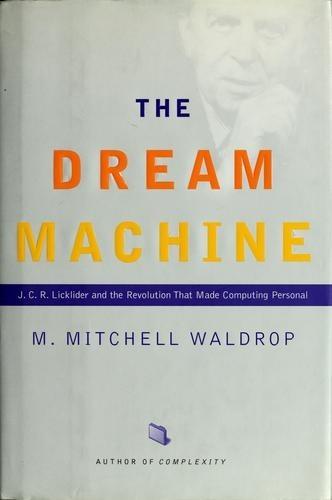
The Dream Machine: J.C.R. Licklider and the Revolution That Made Computing Personal
by
M. Mitchell Waldrop
Published 14 Apr 2001
"So by the time we finished MAXC, I had read the 'Symbiosis' article, which was where Lick had said it all, and which was probably one of the things that made Bob's idea less inscrutable"). And then, having done all that, Taylor was con- tent to sit back in the Dealer Meetings and elsewhere and let his people function as a kind of self-exciting system. As Stu Card remembers it, "There was this thread of ideas that led from Vannevar Bush through J. C. R. Licklider, Doug Engelbart, Ted Nelson, and Alan Kay-a thread in the Ascent of Man. It was like the Holy Grail. We would rationalize our mission according to what Xerox needed, and so on. But whenever we could phrase an idea so that it fell on this path, then suddenly every- body's eyes would light up, and you'd hit this resonance frequency."
…
Witness the public's eager embrace of computer utilities in the 1960s, when thousands of nonprofessionals had finally gotten the chance to tap in and experience the exhilaration firsthand. Or witness the rhetoric of counterculture gurus such as Stewart Brand (who'd called computing "the best news since psychedelics") and Ted Nelson, an independently wealthy computer activist who had declared that "hypertext" -a word he'd invented to describe the electronic links first imagined by Vannevar Bush-would at last allow us to break free from linear thought and hierarchical power structures. The ARPA vi- sion of personal involvement with computers had resonated deeply with the head-tripping, antiestablishment spirit of the era.
…
And then around Christmastime 1990, at CERN, the European Center for Particle Physics in Geneva, Switzerland, an English physicist named Tim Berners- Lee finished the initial coding of a system in which Internet files could be linked via hypertext. Actually, Berners- Lee had already been playing with the idea of hypertext for a full decade by that point, having independently reinvented the idea long be- fore he ever heard of Vannevar Bush, Doug Engelbart, Ted Nelson, or, for that matter, the Internet itself; his first implementation, in 1980, had been a kind of free-forn1 database that simply linked files within a single computer. But having a program follow hyperlinks across the network was an obvious extension of the idea, especially after CERN joined the Internet in the late 1980s.

Survival of the Richest: Escape Fantasies of the Tech Billionaires
by
Douglas Rushkoff
Published 7 Sep 2022
Not just that, but this very effort is becoming its own undoing. The internet—perhaps the ultimate accomplishment of the technocracy—is also the greatest feedback mechanism of all time. Its architects were actually clever enough to try to prevent this. The original vision of the net described by Ted Nelson was for a network of two-way links, where “anyone may publish connected comments to any page.” It would have been one big dynamical system, where every link to something is also a link back . Less like a publishing platform than a nervous system. Such a system was both too difficult and, arguably, too democratic to be developed or to succeed in a media environment still largely based on one-way broadcast, so it was shelved in favor of what we now call the Web.
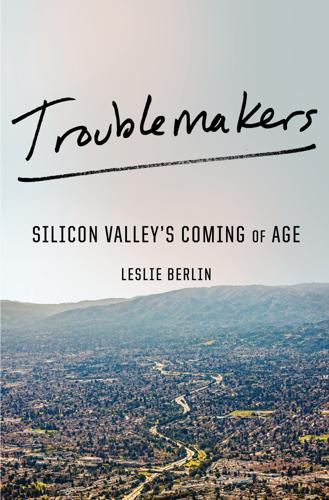
Troublemakers: Silicon Valley's Coming of Age
by
Leslie Berlin
Published 7 Nov 2017
He knew whether to move up or down the scale to approximate the sound, he could recognize when a note was wrong, but he needed someone else to make the music. There have been many great technical visionaries whose ideas never reached full expression under the visionary’s guidance. In Taylor’s own day, indeed within a few miles of the Xerox PARC office, there were two. In the 1970s, Ted Nelson, who coined the word “hypertext,” wrote about a complex information architecture called Project Xanadu that never came to fruition, despite anticipating and in some ways exceeding the World Wide Web. Likewise, many of Douglas Engelbart’s ideas were not realized until they were refined at PARC, in the computer science and systems science labs.
…
Kay’s library order: Fred Turner, From Counterculture to Cyberculture: Stewart Brand, the Whole Earth Network, and the Rise of Digital Utopianism (Chicago: University of Chicago Press, 2006): 124. 37. Chuck Thacker, interview by author, April 11, 2014. 38. Paul A. Strassmann, CBI interview. Computer Lib is also the title of a book published by Ted Nelson in 1974. 39. Kearns and Nadler, Prophets in the Dark. There Are No Standards Yet — Mike Markkula 1. Steve Wozniak and Gina Smith, iWoz: Computer Geek to Cult Icon: How I Invented the Personal Computer, Co-Founded Apple, and Had Fun Doing It (New York: W. W. Norton & Co, 2006): 184. 2. Ibid.: 186. 3.
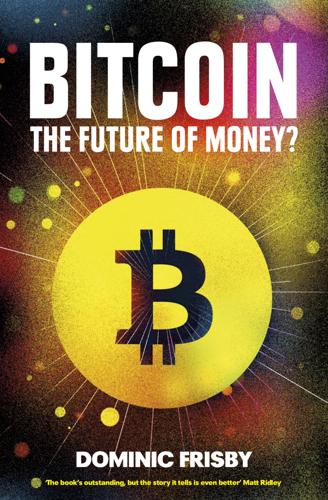
Bitcoin: The Future of Money?
by
Dominic Frisby
Published 1 Nov 2014
But he is not old enough, in my view, and his English, though excellent, is not as impeccable as Satoshi’s. A quick read of his posts reveals this. The reclusive Japanese-American mathematician Shinichi Mochizuki was a hot favourite to be Satoshi at one stage, thanks to a YouTube video released by the outspoken Californian academic, Ted Nelson. Mochizuki made no public denial. He certainly has the writing and mathematical ability, but there is no evidence of his having the C++ coding skills, nor the background in cryptography or Cypherpunk, let alone the interest or desire to devise an electronic currency. He’s all about the maths. The plethora of academic papers he released during the 2007–10 period that Satoshi was developing Bitcoin indicates he would also not have had the time for Bitcoin.
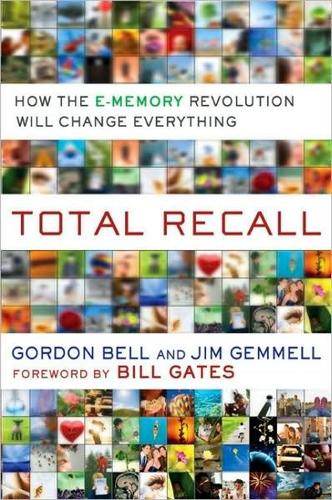
Total Recall: How the E-Memory Revolution Will Change Everything
by
Gordon Bell
and
Jim Gemmell
Published 15 Feb 2009
.: United States Government Printing Office. http://www.nsf.gov/about/history/vbush1945.htm; also available as ACLS Humanities E-Book (August 1, 2008). Some believe that Paul Otlet, not Bush, ought to get the credit for the concept of hyperlinks for his 1934 “réseau” idea. Wright, Alex. 2008. “The Web Time Forgot.” The New York Times (June 17). In the 1960s, Ted Nelson took Bush’s ideas and extended them to support a new paradigm for literature in a networked world. He coined the term hypertext and proposed ideas that are current today, like virtually including one work inside another and using micropayments. Nelson, Theodor Holm. 1993. Literary Machines. Sausalito, Calif.: Mindful Press.
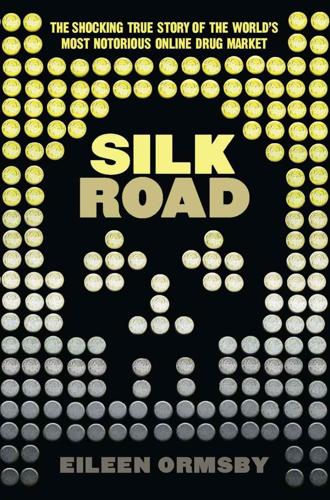
Silk Road
by
Eileen Ormsby
Published 1 Nov 2014
But it was clear that it no longer relied on the dark markets for its value. What would Satoshi Nakamoto think of his multibillion-dollar invention now? The hunt for Satoshi had not slowed down. Revered as the genius father of bitcoin, his elusiveness made him all the more interesting. American IT sociologist and philosopher Ted Nelson had named maths genius Shinichi Mochizuki (male, 44, Japan) in May 2013 in a video he released on YouTube, but, as with earlier ‘unmaskings’, the evidence was weak. And again, the accused denied it. In mid-2013, blogger Sergio Lerner uncovered a hoard of about $120 million in bitcoins owned by a single entity.
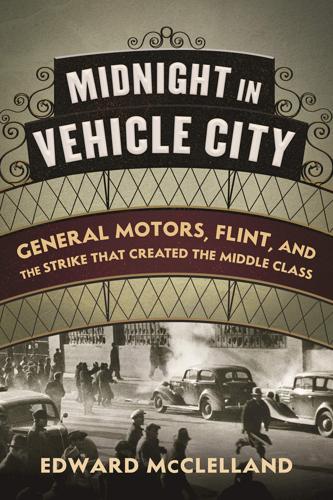
Midnight in Vehicle City: General Motors, Flint, and the Strike That Created the Middle Class
by
Edward McClelland
Published 2 Feb 2021
Nonetheless, she was able to direct me to oral histories, newspaper clippings, and scrapbooks that helped me tell this story. The staff at Wayne State University’s Walter Reuther Library in Detroit also guided me toward a wealth of material on the strike. So did the late Greg Miller at the Kettering University Archives. Jan and Ted Nelson allowed me to stay at their home whenever I visited Flint, and introduced me to Elizabeth Perkins-Harbin, the daughter and niece of the Perkins brothers, who are the subjects of chapter 2 in this book. Thanks also to former UM-Flint professor Neil Leighton, who conducted dozens of oral history interviews with strikers in the late 1970s and early 1980s.
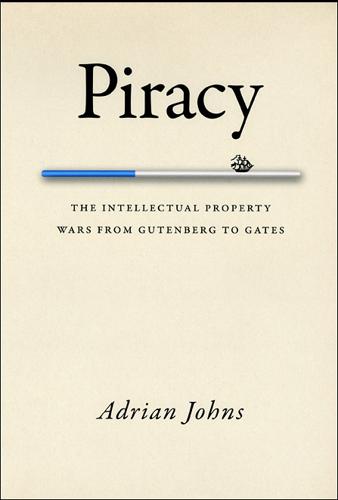
Piracy : The Intellectual Property Wars from Gutenberg to Gates
by
Adrian Johns
Published 5 Jan 2010
Launched in 1969, the catalogue touched on an extraordinary range of topics, from cybernetics and communication theories to agriculture and medicine, with an eclectic individualism purportedly inspired by Buckminster Fuller. It grew with successive editions until by 1971 it was almost 450 pages long. Its influence was demonstrated by the People’s Computer Company, a project overseen by Brand and Robert Albrecht (whom Ted Nelson hailed as the “caliph of counterculture computerdom”). The PCC was both a publication and an institution. As a publication, it was produced on the same printing equipment as the Whole Earth Catalog, using similar pagecraft to proselytize for a cognate message. It even reprinted Catalog material verbatim.
…
But he nevertheless maintained that “while democracy in the United States can survive a victory by Giap, it cannot survive one by ITT.” Illich defined a vision for some early digital pioneers, like Felsenstein. Yet, contrary to much hacker mythology, enthusiasts in the early days were never united in opposing intellectual property per se. Ted Nelson’s Computer Lib/Dream Machines of 1974, the foremost example of countercultural computer literature, is revealing of the tensions involved – tensions that would end up shaping digital culture itself. A visionary manifesto for the power of engagement with computers, Nelson’s book was in one sense a clear articulation of the principle of computer conviviality.

Protocol: how control exists after decentralization
by
Alexander R. Galloway
Published 1 Apr 2004
Software products have long been developed and released into the public domain, with seemingly no profit motive on the side of the authors, simply for the higher glory of the code itself. “Spacewar was not sold,” Steven Levy writes, referring to the early video game developed by several early computer enthusiasts at MIT. “Like any other 51. Another is the delightfully schizophrenic Ted Nelson, inventor of hypertext. See Computer Lib/Dream Machines (Redmond, WA: Tempus/Microsoft, 1987). 52. Pierre Lévy, L’intelligence collective: Pour une anthropologie du cyberspace (Paris: Éditions la Découverte, 1994), p. 120. 53. Stewart Brand, “SPACEWAR: Fanatic Life and Symbolic Death among the Computer Bums,” Rolling Stone, December 7, 1972, p. 58. 54.

Social Life of Information
by
John Seely Brown
and
Paul Duguid
Published 2 Feb 2000
If a little is lost on the journey, it is of no more significance than the odd package lost in transit. The English language also reflects this view. Documents are said, for example, to contain, hold, carry, and convey information. For those who remember them, this way of talking recalls the old-fashioned telegram (or ransom note) where strips of text were pasted down on a backing sheet. Ted Nelson, one of the early champions of hypertext, was no doubt thinking in much the same way when he dismissively described paper documents as just "an object that information has been sprayed onto in the past." 16 All these usages are instances of what the linguist Michael Reddy has called "conduit" metaphors.

Lurking: How a Person Became a User
by
Joanne McNeil
Published 25 Feb 2020
Another stunning work is Why’s (Poignant) Guide to Ruby, a poetic, transgressive, and strange online document, with illustrations and recursive humor, that also happens to be one of the first guides to the Ruby programming language. The author, who was known as Why the Lucky Stiff, or “_why,” had a restless Pynchonian humor (and disappeared from public life, like him). Other work just never materialized, like Ted Nelson’s impossible dream of Project Xanadu, a goal since 1960 for universal electronic publishing with version control and unbreakable links—hypertext vaporware, which lives in the hearts of many internet old-timers, like Alejandro Jodorowsky’s unrealized film of Dune. Unfocused internet-hating in culture writing happened alongside uncritical, even fanboyish reporting on the tech industry that appeared in business sections.
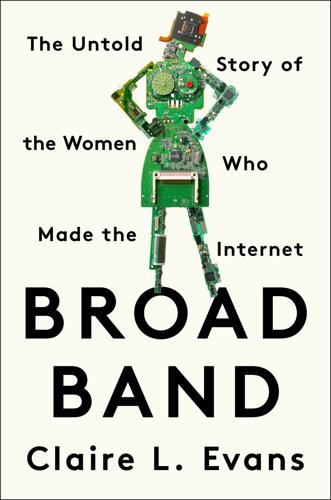
Broad Band: The Untold Story of the Women Who Made the Internet
by
Claire L. Evans
Published 6 Mar 2018
“This web of time,” Borges wrote, “the strands of which approach one another, bifurcate, intersect or ignore each other through the centuries—embraces every possibility.” He may have loved the World Wide Web. The Web as we know it isn’t modeled on Borges, Joyce, or the Talmud. The most famous hypertext pioneers are men—Doug Engelbart, Jake Feinler’s mentor at Stanford, incorporated hypertext into his oNLine System, and Ted Nelson, a Bay Area counterculture hero, coined the word and has championed utopian hypertext ideas for decades—but the Web appeared on the scene only after hypertext principles and conventions had been explored for nearly a decade by brilliant female researchers and computer scientists. They were the architects of the hypertext systems that time forgot, systems with names like Intermedia, Microcosm, Aquanet, NoteCards, and VIKI, the earliest ontological frameworks of the information age.
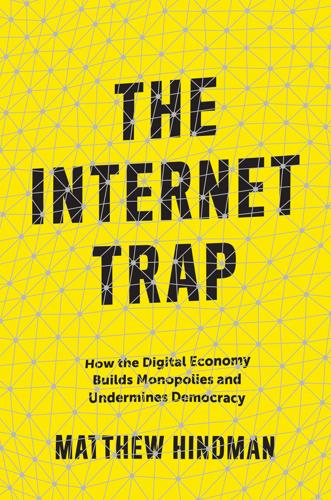
The Internet Trap: How the Digital Economy Builds Monopolies and Undermines Democracy
by
Matthew Hindman
Published 24 Sep 2018
The web is so popular, powerful, and omnipresent that we forget just how badly it has failed at its original goal. The World Wide Web was built in an explicit attempt to eliminate hierarchy in communications. It tried to do this by combining other technologies developed with that same goal in mind. The first such technology was hypertext, originated in the 1960s by sociologist Ted Nelson. Hypertext documents were designed to be consumed nonsequentially. Links within the hypertext could point to other relevant passages, definitions, graphics, tables, or even other documents on the same computer. The second technology was the internet, which by the 1980s had become ubiquitous in universities and research labs.

Reinventing Discovery: The New Era of Networked Science
by
Michael Nielsen
Published 2 Oct 2011
Collective intelligence: The idea of using computers to amplify individual and collective human intelligence has a long history. Influential early works include Vannevar Bush’s celebrated article “As We May Think” [31], which described his imagined memex system, and inspired the seminal work of both Douglas Engelbart [63] and Ted Nelson [145]. Although these works are many decades old, they lay out much of what we see in today’s internet, and reveal vistas beyond. Aside from these foundational works, my ideas about collective intelligence have been strongly influenced by economic ideas. Herbert Simon [197] seems to have been the first person to have pointed out the crucial role of attention as a scarce resource in an information-rich world.
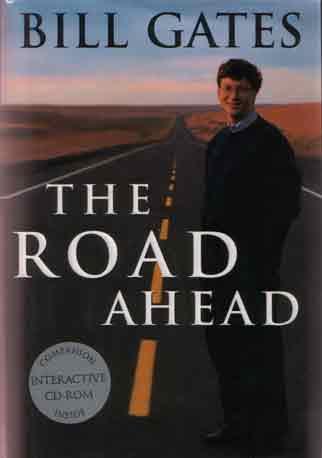
The Road Ahead
by
Bill Gates
,
Nathan Myhrvold
and
Peter Rinearson
Published 15 Nov 1995
The TCP/IP protocols that define its transport level support distributed computing and also scale incredibly well. The protocols that define Web browsing are extremely simple and have allowed servers to handle immense amounts of traffic reasonably well. Many of the predictions about interactive books and hyperlinks—made decades ago by pioneers like Ted Nelson—are coming true on the Web. Today's Internet is not the information highway I imagine, although you can think of it as the beginning of the highway. An analogy is the Oregon Trail. Between 1841 and the early 1860s, more than 300,000 hardy souls rode wagon trains out of Independence, Missouri, for a dangerous 2,000-mile journey across the wilderness to the Oregon Territories or the gold fields of California.
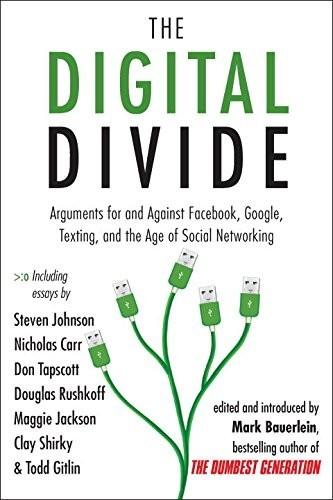
The Digital Divide: Arguments for and Against Facebook, Google, Texting, and the Age of Social Netwo Rking
by
Mark Bauerlein
Published 7 Sep 2011
A sixty-year-old Midwestern businessman I know found himself logging on every night to engage in a conversation about Jungian archetypes. It lasted for four weeks before he realized the person with whom he was conversing was a sixteen-year-old boy from Tokyo. It felt as though we were wiring up a global brain. Techno visionaries of the period, such as Ted Nelson—who coined the word hypertext —told us how the Internet could be used as a library for everything ever written. A musician named Jaron Lanier invented a bizarre interactive space he called “virtual reality” in which people would be able to, in his words, “really see what the other means.” The Internet was no longer a government research project.

The Cultural Logic of Computation
by
David Golumbia
Published 31 Mar 2009
It seems not merely reasonable but likely that the best-known humanistic worldviews would resist applications of schemes like the Semantic Web to ordinary textual data, and in particular to focus attention on what humanists have always put first: our responsibility to each other as human beings, and our profound interest in and respect for human creations, including both computers and language. While such a view is compatible with the perspective that embedded markup is itself potentially harmful (as no less a thinker than Ted Nelson has suggested, 1997; also see Smith 2001), it at least leads to what practice itself has shown the OHCO theorists: where semantic markup is concerned, less is more. Where the humanities are concerned, the linguistic imperatives offered by computers and the web seem less promisingly those of markup-based machine communication than the communicative opportunities computers may open for human beings who need them—and no less the avenues of linguistic communication whose existence computers help put into jeopardy.12 Monolingualism of the World Wide Web Another tempting but inaccurate analogy between programming languages and natural languages can be found along the axis of linguistic diversity.
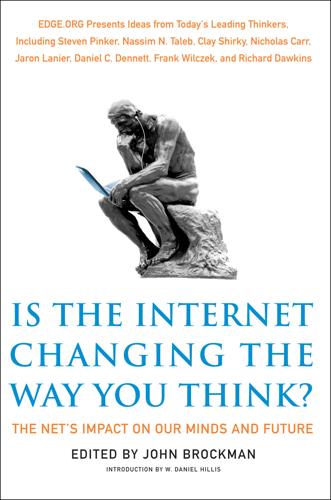
Is the Internet Changing the Way You Think?: The Net's Impact on Our Minds and Future
by
John Brockman
Published 18 Jan 2011
Now there is a nearly infinite pool of accessible information that becomes my knowledge in a heartbeat measured in bits per second. For those of us who wallow in the world of knowledge for pleasure and profit, the Internet has become a vast extension of our potential selves. The modern Internet has achieved much of what Ted Nelson articulated decades ago in his vision of the Xanadu project, or Doug Engelbart in his human augmentation vision at SRI. Nearly all useful knowledge is now accessible instantaneously from much of the world. Our effective personal memories are now vastly larger—essentially infinite. Our identity is embedded in what we know.
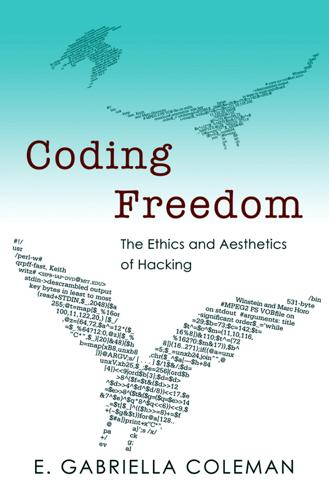
Coding Freedom: The Ethics and Aesthetics of Hacking
by
E. Gabriella Coleman
Published 25 Nov 2012
For a discussion of some of the tensions in the corporate world that arose due to the perception of programmers as clever and idiosyncratic, and an excellent history of programmers, see Ensmenger 2010, especially chapter 3. 6. http://www.ingen.mb.ca/cgi-bin/news.pl?action=600&id=10383 (accessed November 20, 2007). 7. I would like to thank Jonah Bossewitch, who pushed me to think about humor in light of the rationality of the computer more deeply. 8. Some notable examples of populist formulations are Computer Lib by Ted Nelson (1974) and Stallman’s “GNU Manifesto.” For examples of the elitist manifestation, see Levy 1984; Sterling 1992; Borsook 2000. 9. http://osdir.com/ml/linux.debian.devel.mentors/2003-03/msg00272.html (accessed July 5, 2009). 10. http://osdir.com/ml/linux.debian.devel.mentors/2003-03/msg00225.html (accessed July 5, 2009). 11.

The Human City: Urbanism for the Rest of Us
by
Joel Kotkin
Published 11 Apr 2016
The tracts range from small townhomes costing about $200,000 to what some might call McMansions that go for several times more. Nearly 60 percent of local residents who have moved there since 2014—over 1,100 households—are married couples with children, while less than 10 percent are single. “It’s a pretty family-centric area,” notes Ted Nelson, regional president of the central states for Cinco Ranch’s primary developer, Newland Real Estate Group. To some critics, Cinco Ranch—and other developments around Houston like Bridgeland, Sienna Plantation, The Woodlands, and Sugar Land—represents everything that is bad about suburban “sprawl,” with leapfrogging development that swallows rural lands and leaves inner-city communities behind.3 The Grand Parkway, which will connect the community with the giant new Exxon campus rising to the north, has similarly been widely denounced as spurring “sprawling land development” that could hurt both the environment and the core city.4 Houston may be a uniquely “self-organizing city,” in the words of Rice University’s Lars Lerup, but this reality is deeply offensive to many planners and retro-urbanists.5 Yet to many residents of this burgeoning community, Cinco Ranch represents something else: an opportunity to enjoy the American dream with good schools, nice parks and a thriving town center.
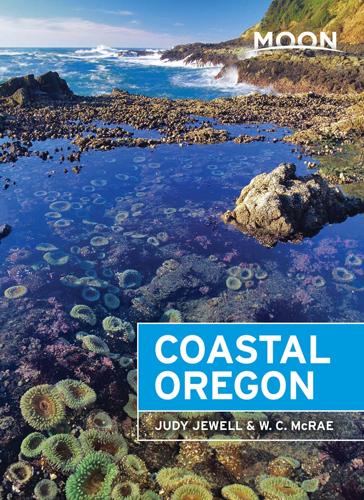
Moon Coastal Oregon
by
Judy Jewell
and
W. C. McRae
Published 13 Jul 2020
Details more than 700 campgrounds across the state, with an excellent selection on the coast. Rich with tips on gear, safety, and other topics. Sullivan, William L. 100 Hikes Travel Guide: Oregon Coast and Coast Range. Eugene, OR: Navillus Press, 2016. Hikes and tips from Oregon’s best chronicler of hiking trails. TRAVEL Nelson, Sharlene, and Ted Nelson. Oregon Lighthouses (Umbrella Guides). Kenmore, WA: Northwest Corner Books, 2007. Tells the stories of 11 Oregon coast lighthouses, as well as beacons on the Columbia and Willamette Rivers. A good reference for anyone curious about these romantic aids to navigation. Oberrecht, Kenn. Oregon Coastal Access Guide: A Mile-by-Mile Guide to Scenic and Recreational Attractions.

Machine, Platform, Crowd: Harnessing Our Digital Future
by
Andrew McAfee
and
Erik Brynjolfsson
Published 26 Jun 2017
The web was born in 1989 when Tim Berners-Lee developed a set of protocols that allowed pieces of online content like text and pictures to link to each other, putting in practice the visions of hypertext first described by science and engineering polymath Vannevar Bush in 1945 (theoretically using microfilm) and computer visionary Ted Nelson, whose Project Xanadu never quite took off. The web rapidly turned the Internet from a text-only network into one that could handle pictures, sounds, and other media. This multimedia wonder, so much richer and easier to navigate than anything before, entered the mainstream in 1994 when Netscape released the first commercial web browser, named Navigator.
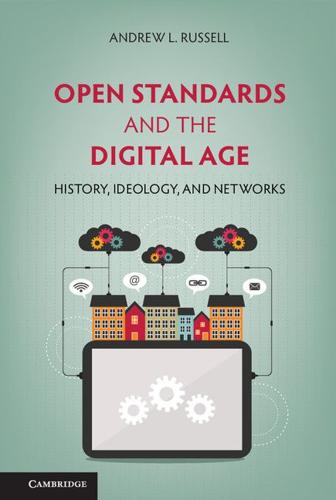
Open Standards and the Digital Age: History, Ideology, and Networks (Cambridge Studies in the Emergence of Global Enterprise)
by
Andrew L. Russell
Published 27 Apr 2014
Historians such as Paul Edwards, Ted Friedman, and Fred Turner have analyzed, more than I have attempted to do here, the close links between counterculture ideals and skepticism toward unrestrained technological power. They point to films such as Desk Set (1957), Dr. Strangelove (1964), 2001: A Space Odyssey (1968), Blade Runner (1982), and The Terminator (1984) as well as books such as Herbert Marcuse’s One Dimensional Man (1964), E. F. Schumacher’s Small Is Beautiful (1973), and Ted Nelson’s Computer Lib/Dream Machines (1974) as indicators of an emerging critical approach to capitalist technology. These ideas took root in the freewheeling corporate cultures in Silicon Valley, which nurtured a fusion between the hacker critique of centralized control and a libertarian strain of individual freedom and empowerment.57 It would be oversimplifying matters, however, to reduce the critiques of centralized control that matured in the 1960s and 1970s to some sort of irresistible triumph of a populist or democratic control over technology.

The Future of Ideas: The Fate of the Commons in a Connected World
by
Lawrence Lessig
Published 14 Jul 2001
Together, TCP and IP allow data delivery between machines on the Internet. “The entire protocol suite is often referred to as TCP/IP because TCP and IP are the two fundamental protocols.”). 49 Berners-Lee, 35. 50 See, e.g., Paul E. Ceruzzi, A History of Modern Computing (Cambridge, Mass.: MIT Press, 1998), 301-2 (describing hypertext “inventor” Ted Nelson's debt to Vannevar Bush, quoting Bush: “The human mind . . . operates by association. With one item in its grasp, it snaps instantly to the next that is suggested by the association of thoughts, in accordance with some intricate web of trails carried by the cells of the brain.”). 51 See Robert M.
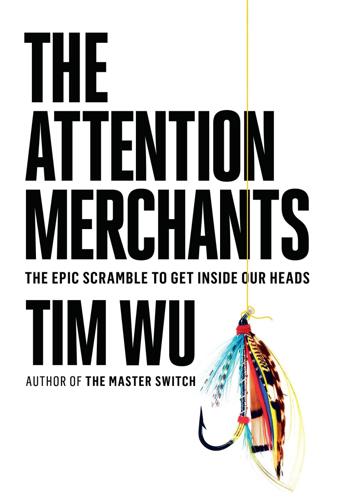
The Attention Merchants: The Epic Scramble to Get Inside Our Heads
by
Tim Wu
Published 14 May 2016
[Young people want] to be totally absorbed in an activity where they are out on an edge and can’t think of anything else. That’s why they try everything from gambling to glue sniffing.” Others seemed to think Space Invaders’s success had to do with the recent national experience. “It’s really Vietnam,” wrote Ted Nelson, a magazine editor. “It’s a body count war. You do it and you never ask why.” With Space Invaders, computers broke through as an indisputable part of the entertainment industry. Indeed, in 1982, the game would be the highest grossing entertainment product in the United States; outperforming even its inspiration, Star Wars, it earned more than $2 billion, one quarter at a time.
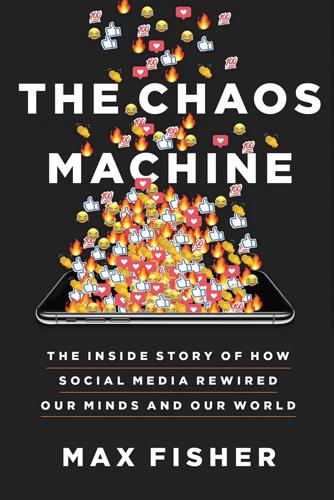
The Chaos Machine: The Inside Story of How Social Media Rewired Our Minds and Our World
by
Max Fisher
Published 5 Sep 2022
Public intellectuals, steeped in the countercultural excitement of the moment, announced the device as a step toward dismantling power structures and building a new society from the bottom up. Future Shock, a 1970 mega-bestseller, predicted a “technological revolution” empowering individuals above institutions. The sociologist Ted Nelson, a friend of Engelbart’s, wrote Computer Lib/Dream Machines, whose title (“Lib” short for liberation) and cover image of a single raised fist conveyed much of the message. The mythology took quick purchase in an industry ready to redefine itself. In 1971, a business periodical coined the term “Silicon Valley,” referencing the silicon-transistor business launched a decade earlier by William Shockley and his disciples.

The Future of the Internet: And How to Stop It
by
Jonathan Zittrain
Published 27 May 2009
Some experiments have also attempted to empower individuals to make their preferences clear at the point an image or video is initially captured. An example is Miguel Mora’s Identity Protection System, which would allow a sticker or badge to function as a signal for surveillance cameras to block an individual from their recording. See Miguel.Mora.Design, http://www.miquelmora.com/idps.html (last visited July 28, 2007). 124. TED NELSON, LITERARY MACHINES (1981); Wikipedia, Transclusion, http://en.wikipedia.org/wiki/Transclusion (as of June 1, 2007, 10:30 GMT). 125. Consider, for example, the Internet Archive. Proprietor Brewster Kahle has thus far avoided what one would think to be an inevitable copyright lawsuit as he archives and makes available historical snapshots of the Web.
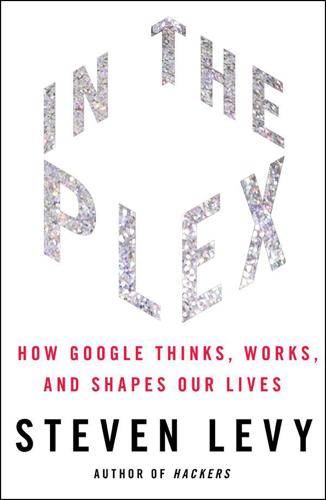
In the Plex: How Google Thinks, Works, and Shapes Our Lives
by
Steven Levy
Published 12 Apr 2011
The timeline continued to the work of Douglas Engelbart, whose team at the Stanford Research Institute devised a linked document system that lived behind a dazzling interface that introduced the metaphors of windows and files to the digital desktop. Then came a detour to the brilliant but erratic work of an autodidact named Ted Nelson, whose ambitious Xanadu Project (though never completed) was a vision of disparate information linked by “hypertext” connections. Nelson’s work inspired Bill Atkinson, a software engineer who had been part of the original Macintosh team; in 1987 he came up with a link-based system called HyperCard, which he sold to Apple for $100,000 on the condition that the company give it away to all its users.
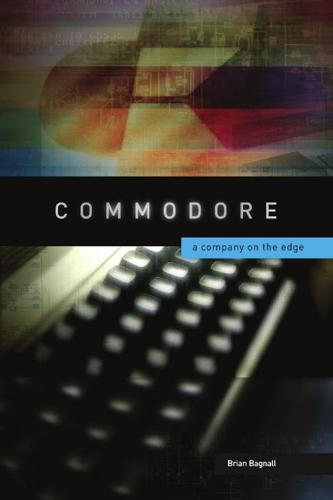
Commodore: A Company on the Edge
by
Brian Bagnall
Published 13 Sep 2005
Attendees would type in commands and most of the time received the response, “Captain, I’m afraid your last command made no sense.” Despite the shortcomings of these early games, people received a distinct thrill from interacting with a computer. Around the edges of the auditorium were side rooms, where presenters gave unorthodox presentations. Among them was Ted Nelson, author of Computer Lib, a book hailed as revolutionary for the time. The book, written in 1974 before the KIM-1 and Altair 8800, envisioned networked computers with libraries of information linked together. At the conference, Nelson gave an impassioned speech about software, criticizing the current state of affairs.
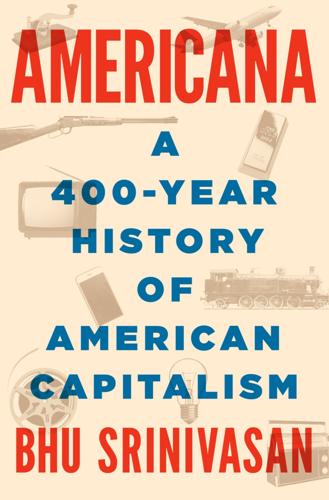
Americana: A 400-Year History of American Capitalism
by
Bhu Srinivasan
Published 25 Sep 2017
He proposed a theoretical system he called “Memex” to create a new kind of cataloging system “ready made with a mesh of associate trails running through them.” But this Bush was too far ahead of his time. Another thinker followed up in 1965 as the age of computing arrived. A self-proclaimed “poet, philosopher, and rogue,” Ted Nelson conceptualized and coined the term “hypertext” to mean words within documents that linked to other documents. But Nelson, lacking a science or computing background, could not make hypertext a reality. In addition to Bush and Nelson, Berners-Lee credited Doug Engelbart at Stanford for his sixties demonstration of a “mouse,” a wooden block with sensors and a ball under it, with which he clicked on words to explore information spatially.

The Rise of the Network Society
by
Manuel Castells
Published 31 Aug 1996
The invention of the world wide web took place in Europe, in 1990, at the Centre Européen pour Recherche Nucleaire (CERN) in Geneva, one of the leading physics research centers in the world. It was invented by a group of researchers at CERN led by Tim Berners-Lee and Robert Cailliau. They built their research not on the ARPANET tradition, but on the contribution of the hackers’ culture of the 1970s. In particular, they partly relied on the work of Ted Nelson who, in 1974, in his pamphlet “Computer Lib,” called upon people to seize and use computer power for their own benefit. Nelson imagined a new system of organizing information which he called “hypertext,” based on horizontal information links. To this pioneering insight, Berners-Lee and co-workers added new technologies adapted from the multimedia world to provide an audiovisual language to their application.

Americana
by
Bhu Srinivasan
He proposed a theoretical system he called “Memex” to create a new kind of cataloging system “ready made with a mesh of associate trails running through them.” But this Bush was too far ahead of his time. Another thinker followed up in 1965 as the age of computing arrived. A self-proclaimed “poet, philosopher, and rogue,” Ted Nelson conceptualized and coined the term “hypertext” to mean words within documents that linked to other documents. But Nelson, lacking a science or computing background, could not make hypertext a reality. In addition to Bush and Nelson, Berners-Lee credited Doug Engelbart at Stanford for his sixties demonstration of a “mouse,” a wooden block with sensors and a ball under it, with which he clicked on words to explore information spatially.
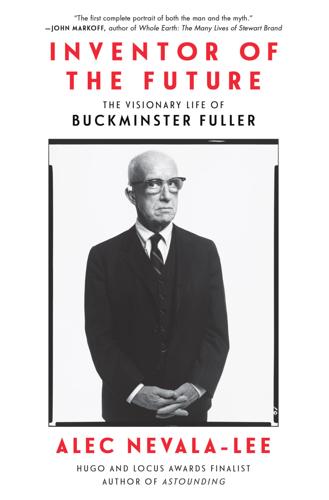
Inventor of the Future: The Visionary Life of Buckminster Fuller
by
Alec Nevala-Lee
Published 1 Aug 2022
Andy Hertzfeld of Apple recalled RBF as a more marginal presence: “I was vaguely familiar with Fuller’s work and have a hazy recollection of folks talking about him at Apple, but I don’t remember anything specific” (email to author, March 23, 2019). Another figure to cite RBF as an influence was Ted Nelson, the author of the 1974 book Computer Lib, who was inspired by the word Dymaxion to coin the term hypertext (Michael Fraase, Macintosh Hypermedia, vol. 1, Reference Guide [Glenview, IL: Scott, Foresman, 1990], 31). “prophetical voices”: Theodore Roszak, From Satori to Silicon Valley (San Francisco: Don’t Call It Frisco, 1986), 18.

Networks, Crowds, and Markets: Reasoning About a Highly Connected World
by
David Easley
and
Jon Kleinberg
Published 15 Nov 2010
Annals of Mathematics, 54:286–295, 1951. [309] National Research Council Committee on Technical and Privacy Dimensions of Information for Terrorism Prevention and Other National Goals. Protecting Individual Privacy in the Struggle Against Terrorists: A Framework for Program Assessment. National Academies Press, 2008. [310] Ted Nelson. Literary Machines. Mindful Press, 1981. [311] Mark E. J. Newman. Scientific collaboration networks: II. Shortest paths, weighted networks, and centrality. Physical Review E, 64:016132, 2001. [312] Mark E. J. Newman. The structure of scientific collaboration networks. Proc. Natl. Acad. Sci. USA, 98(2):404–409, January 2001